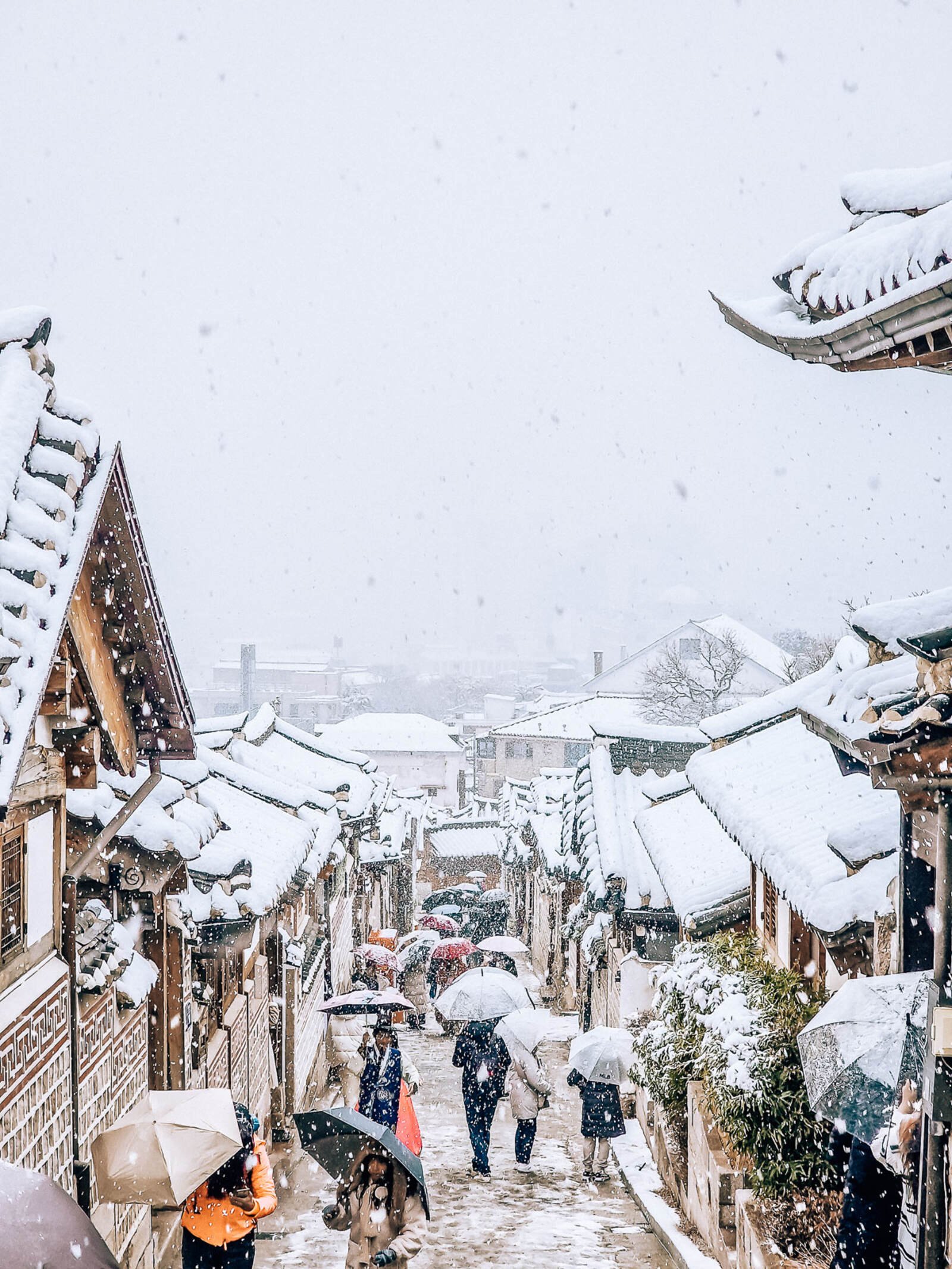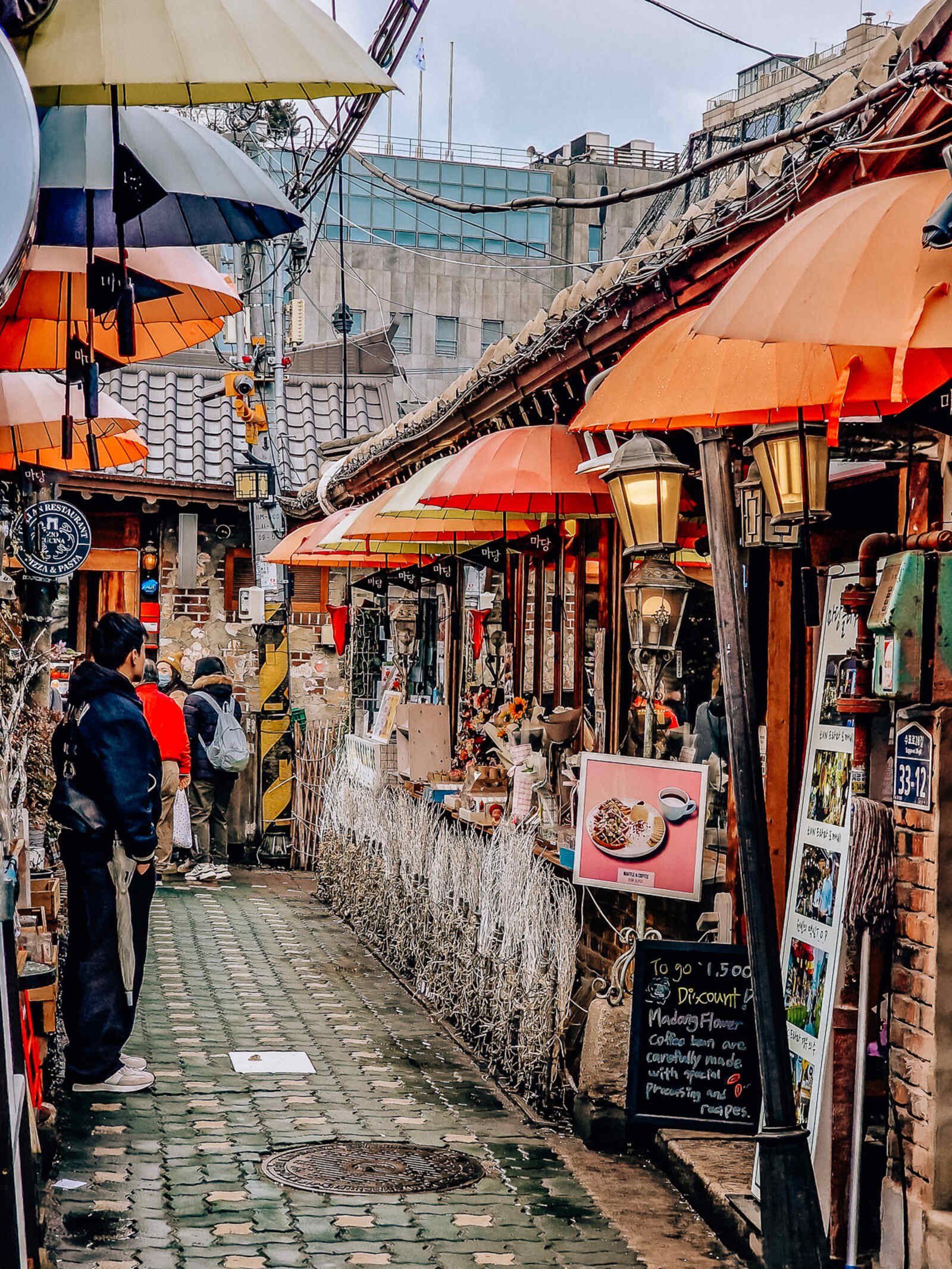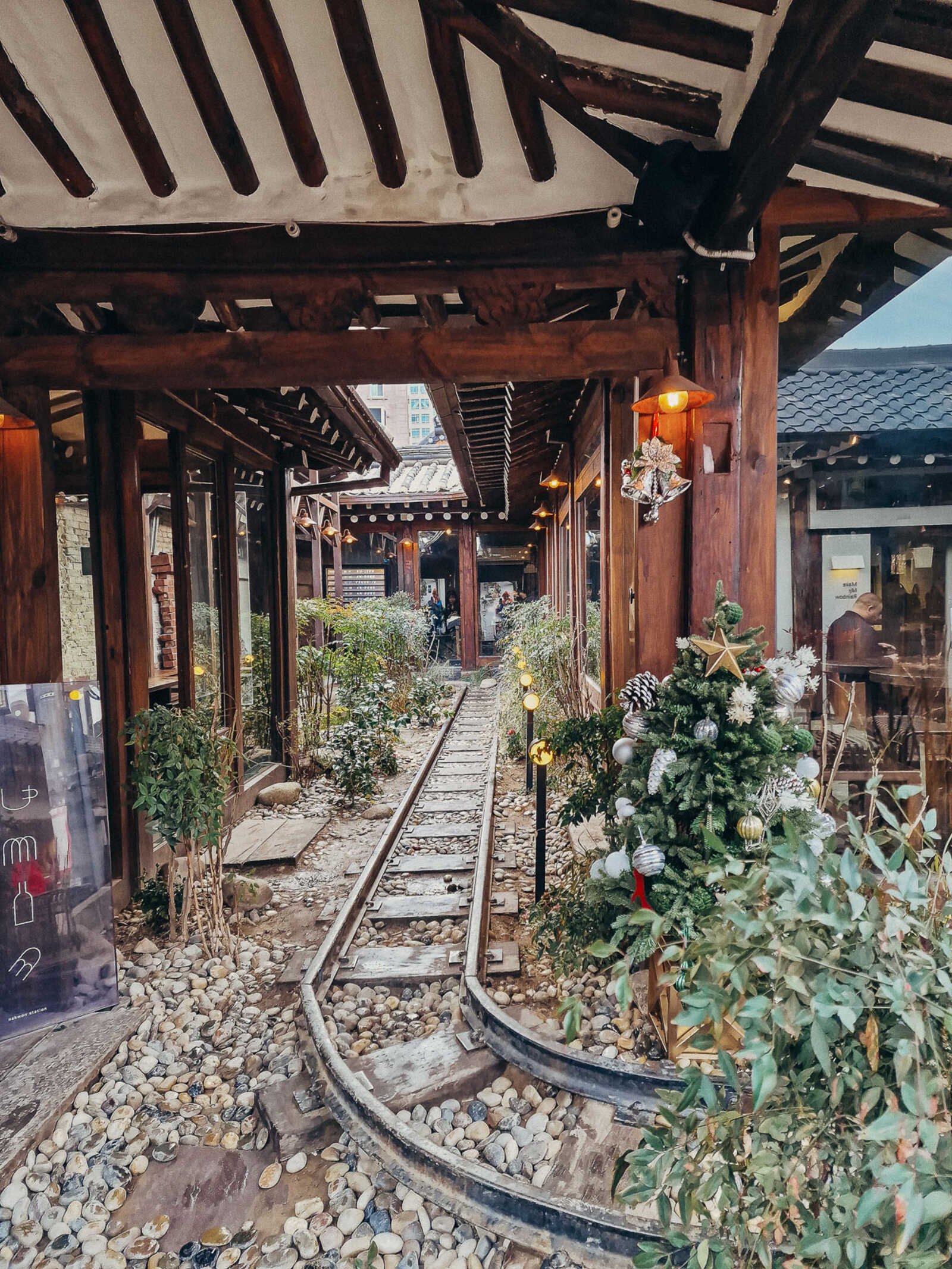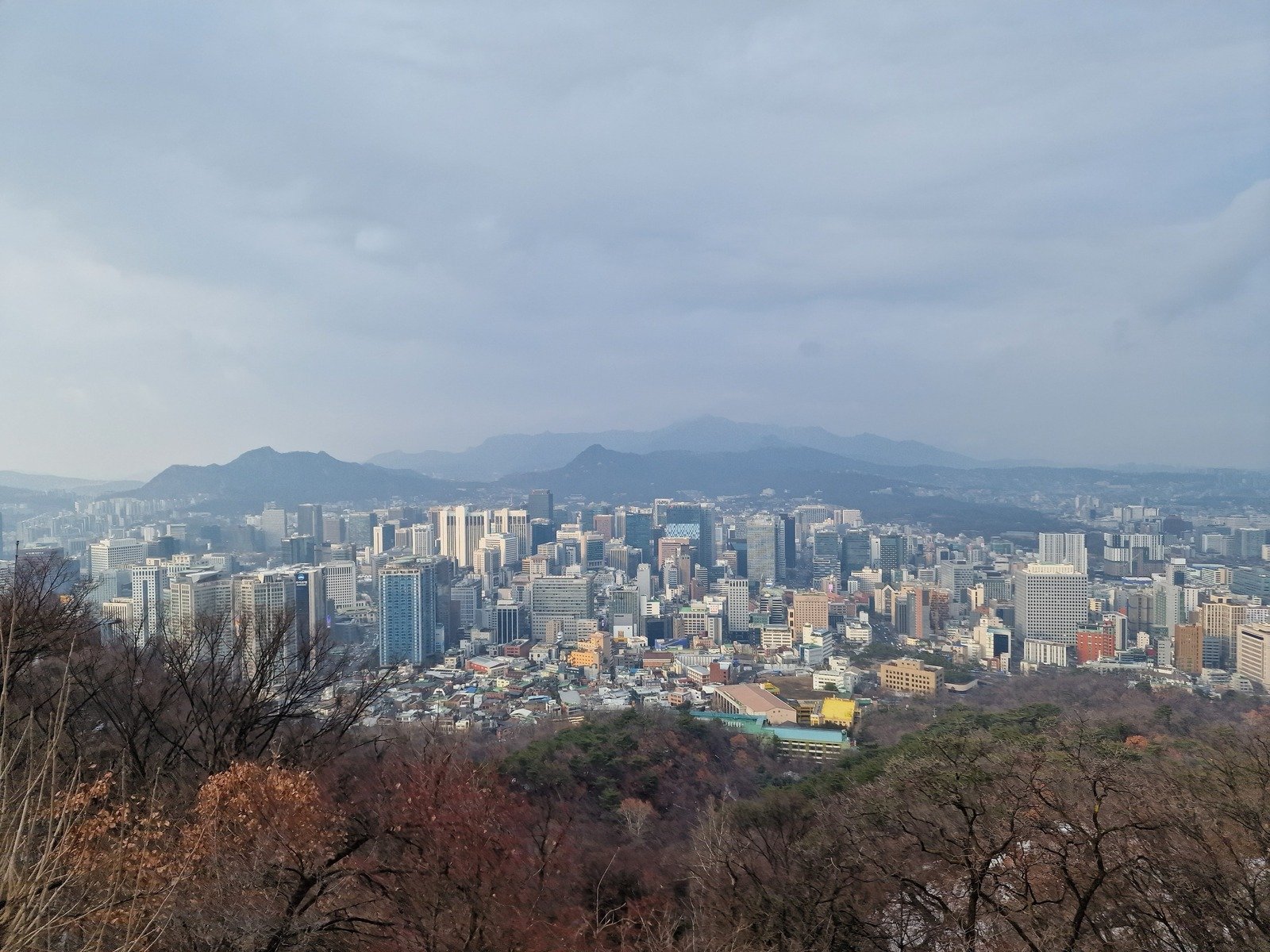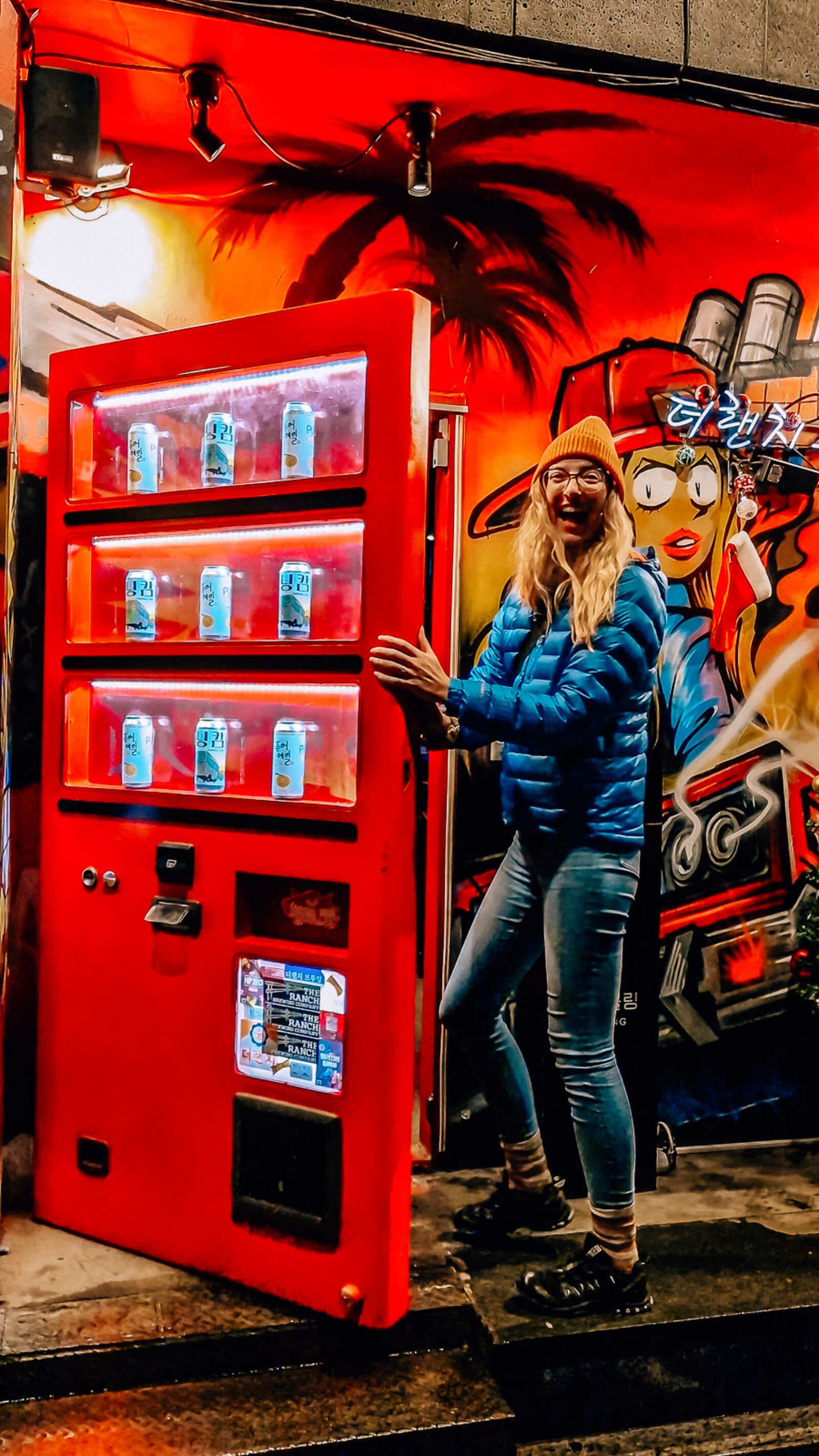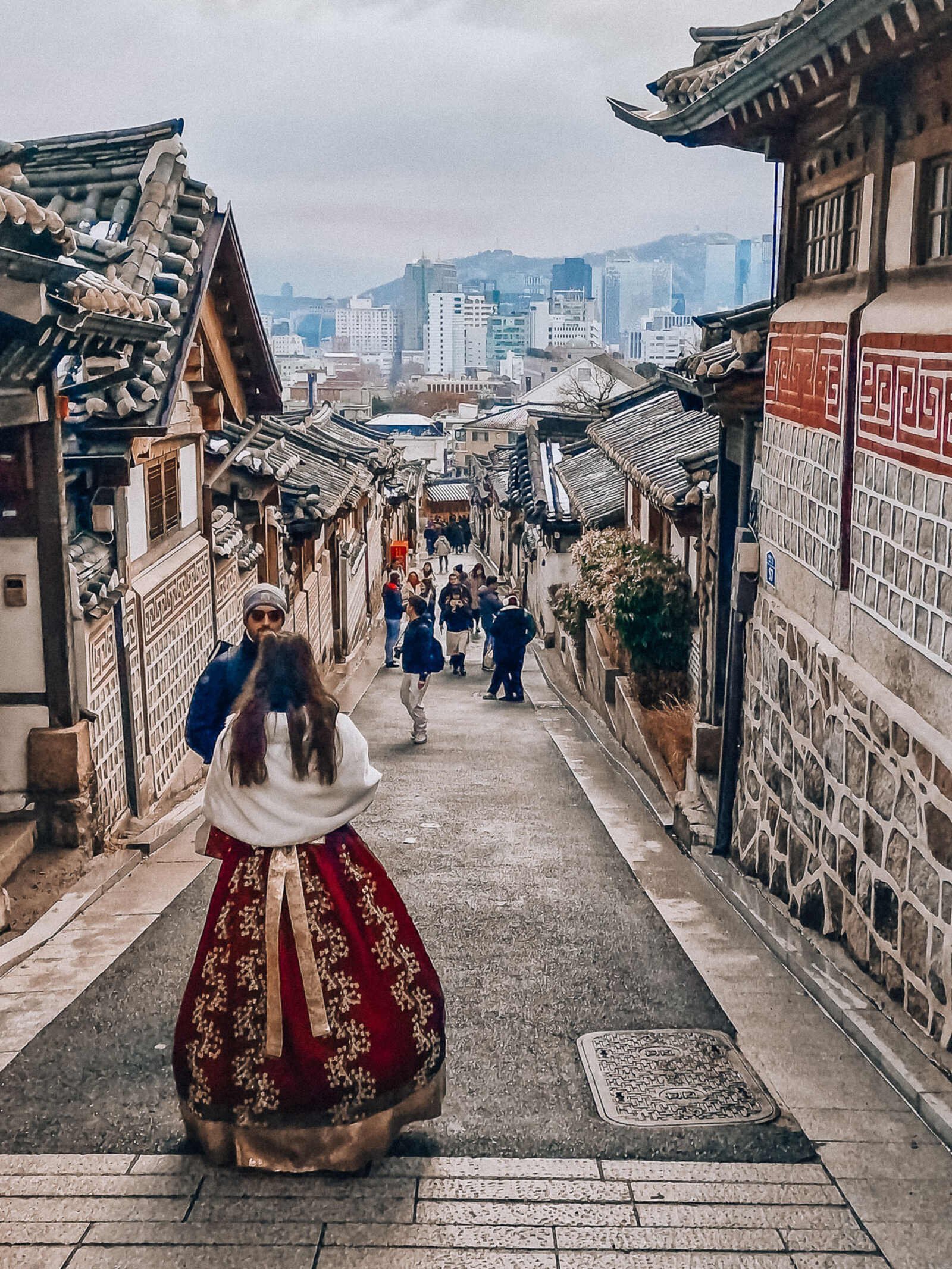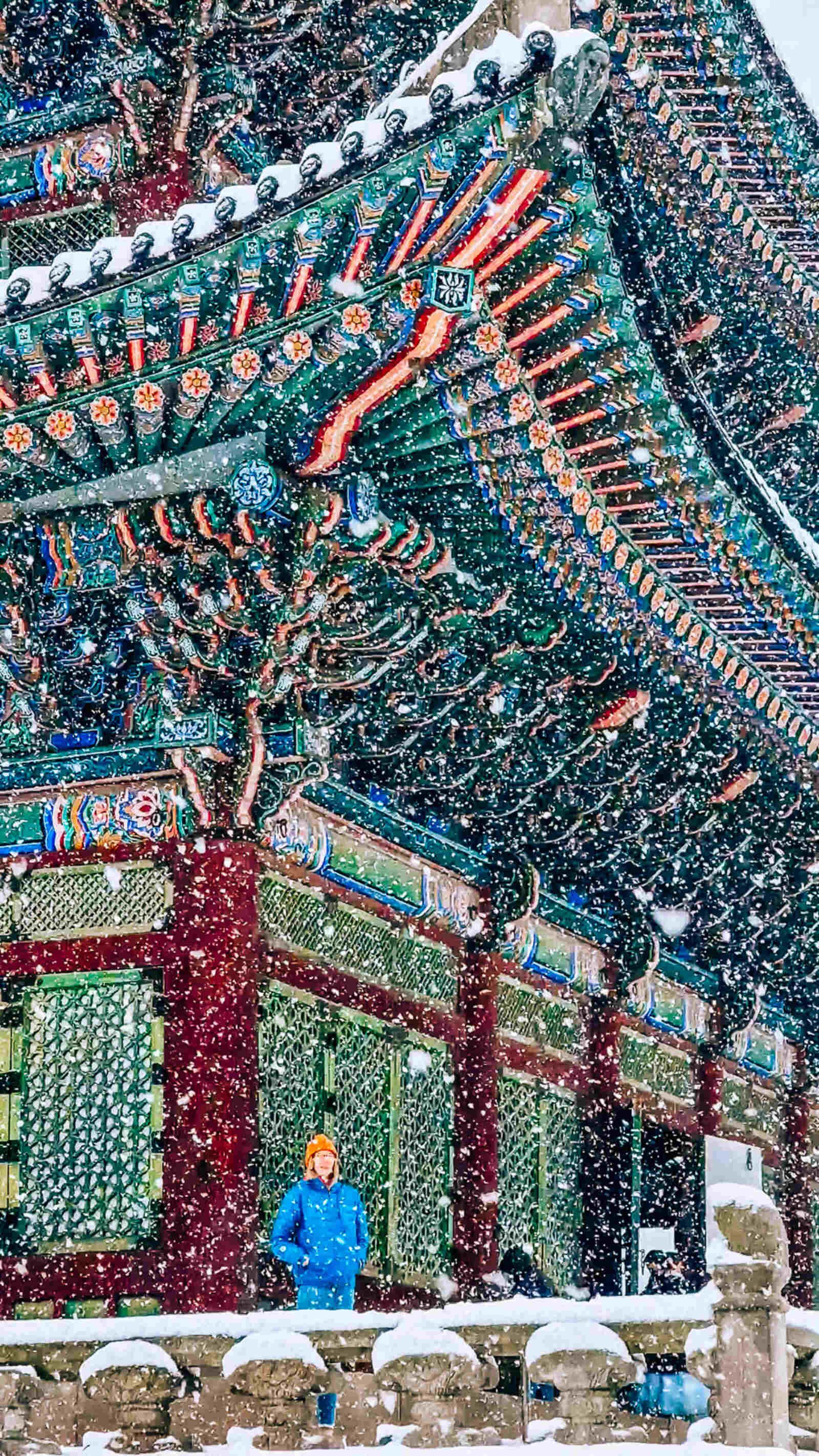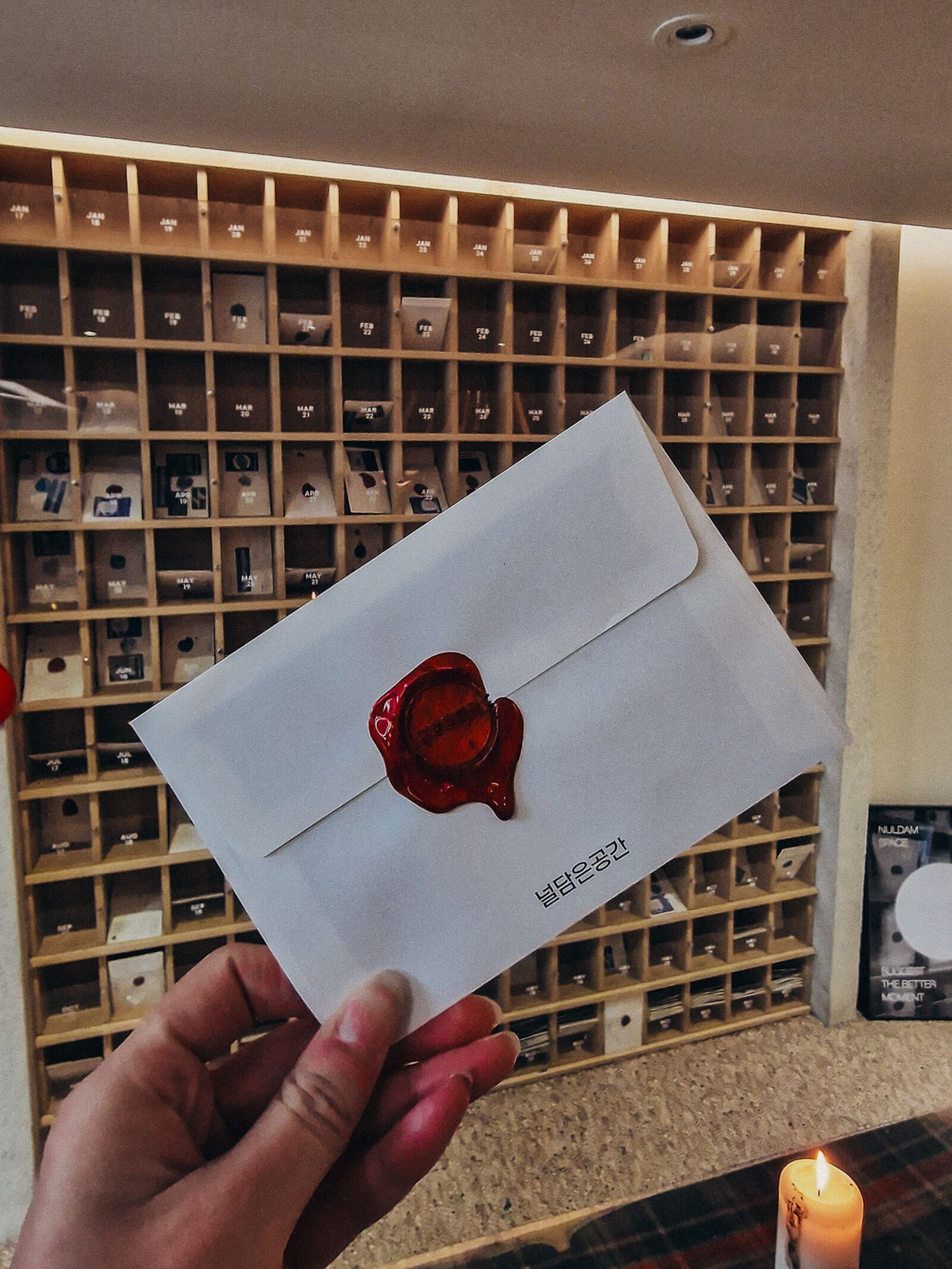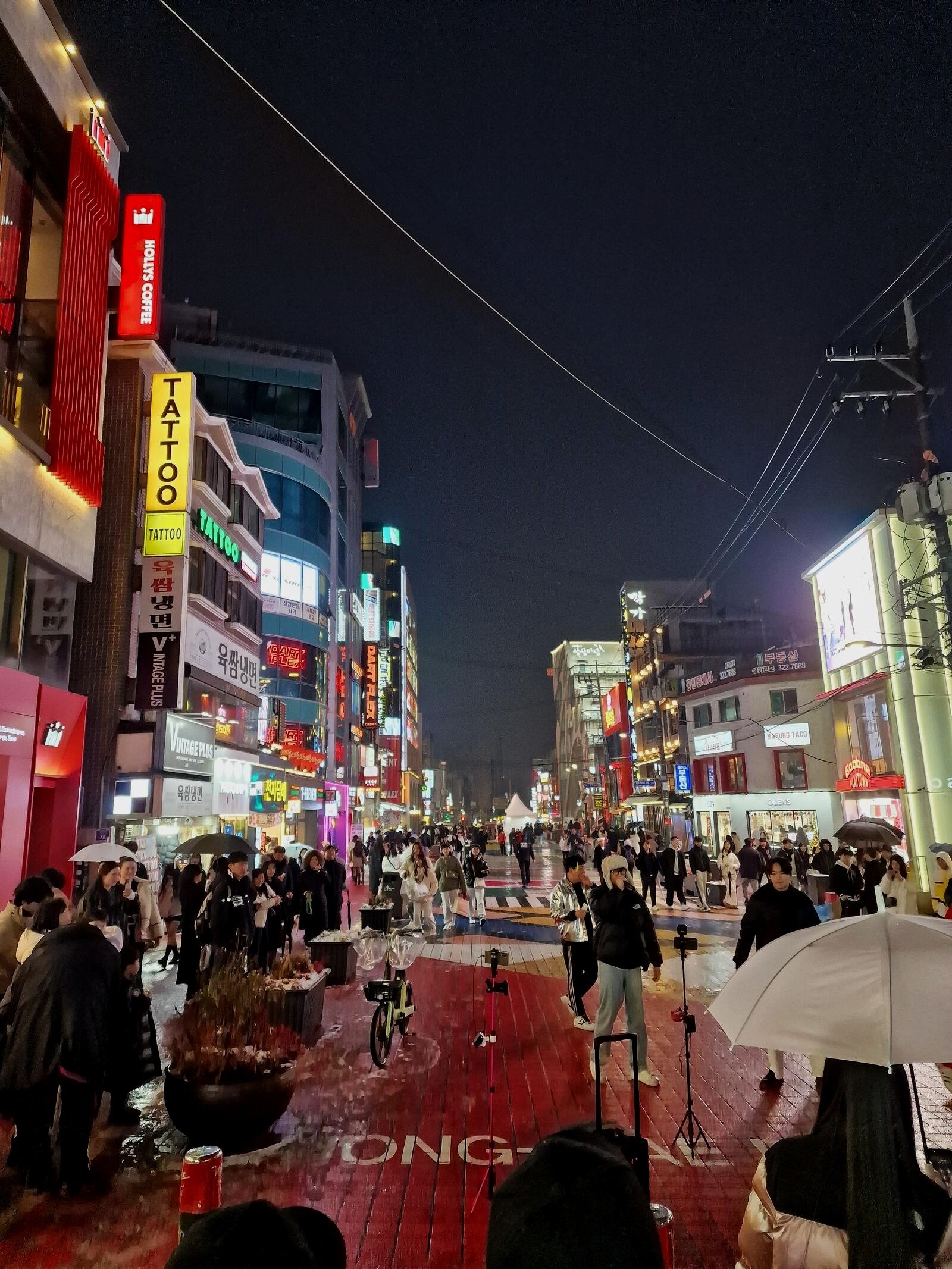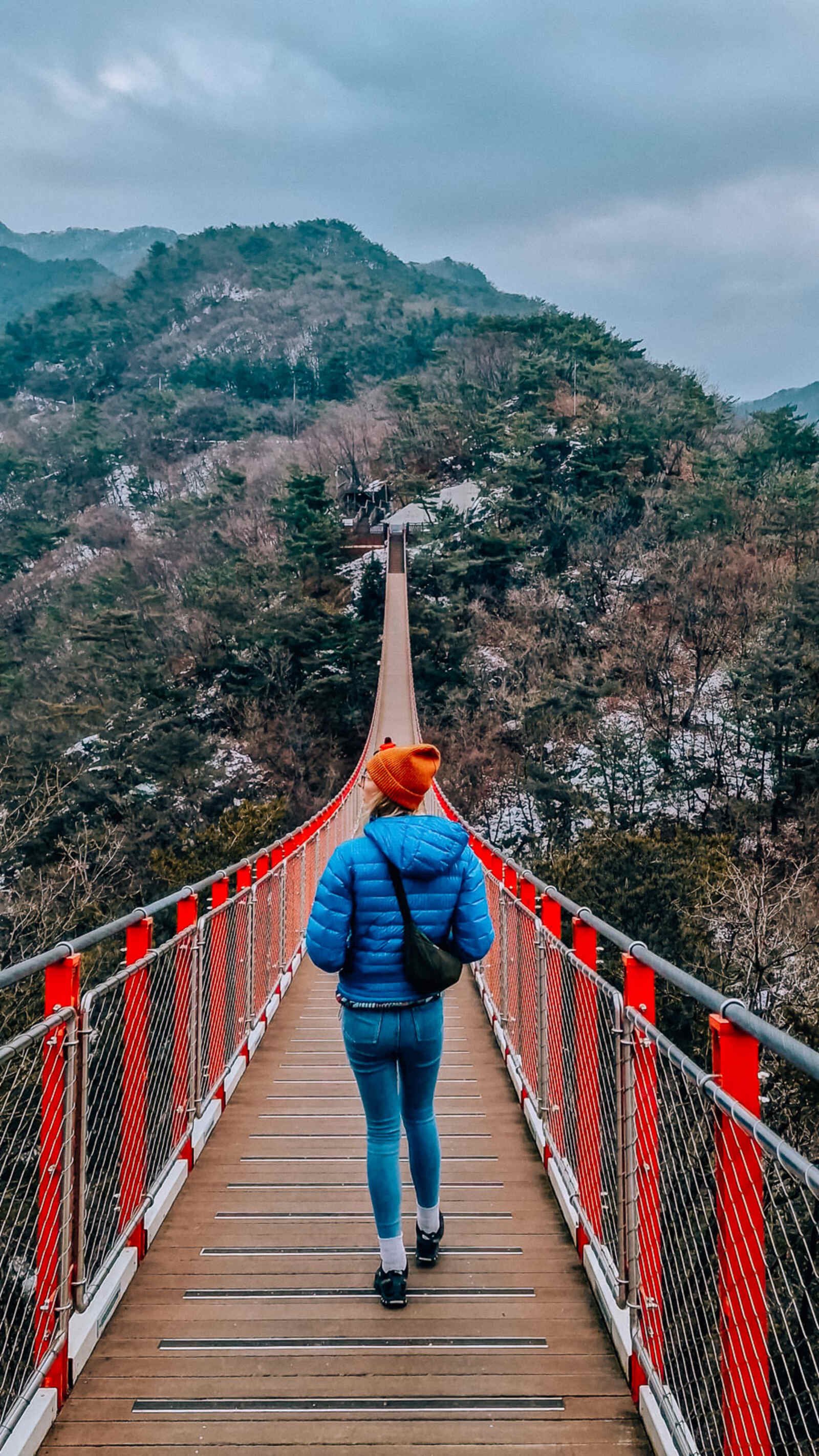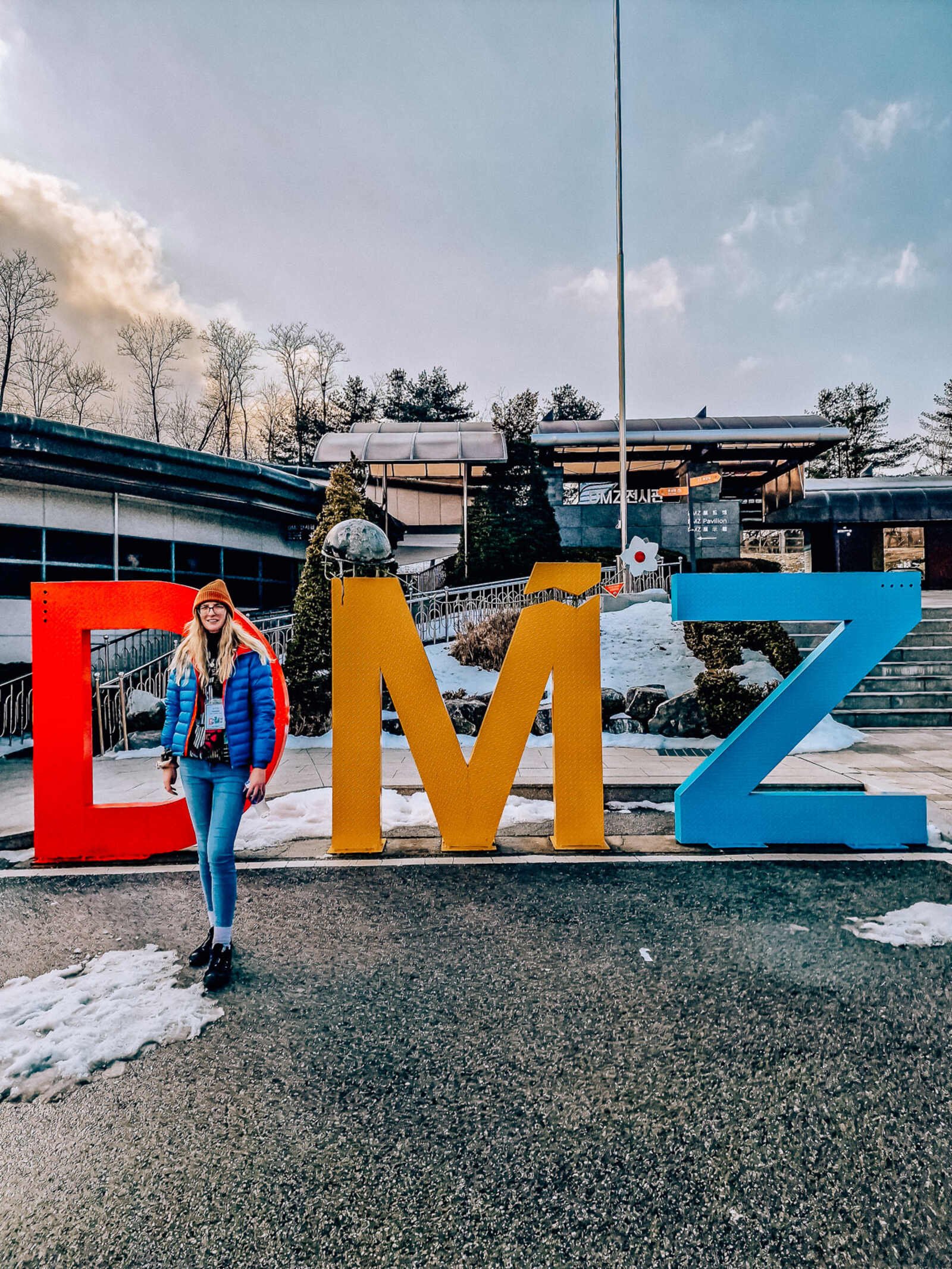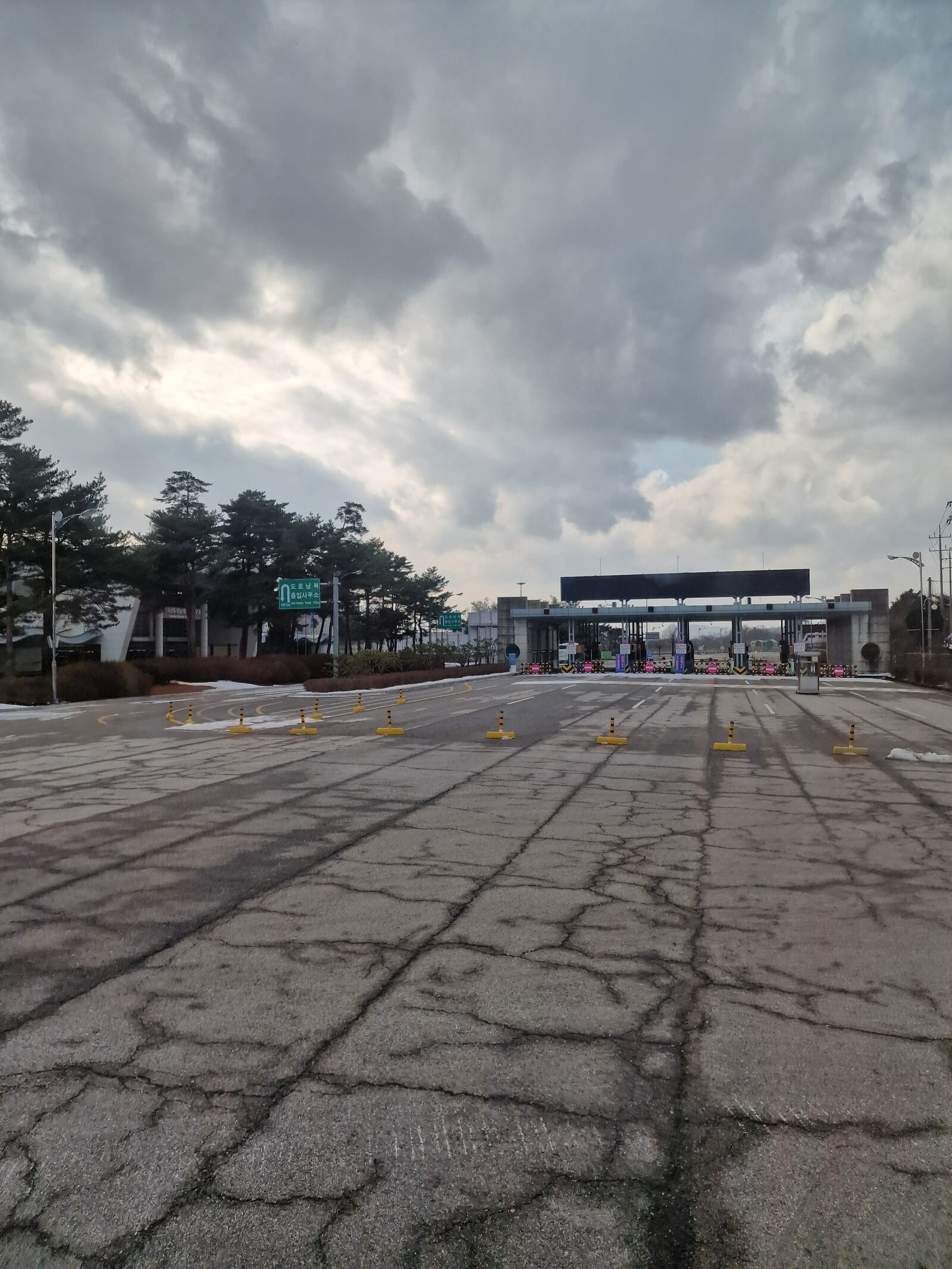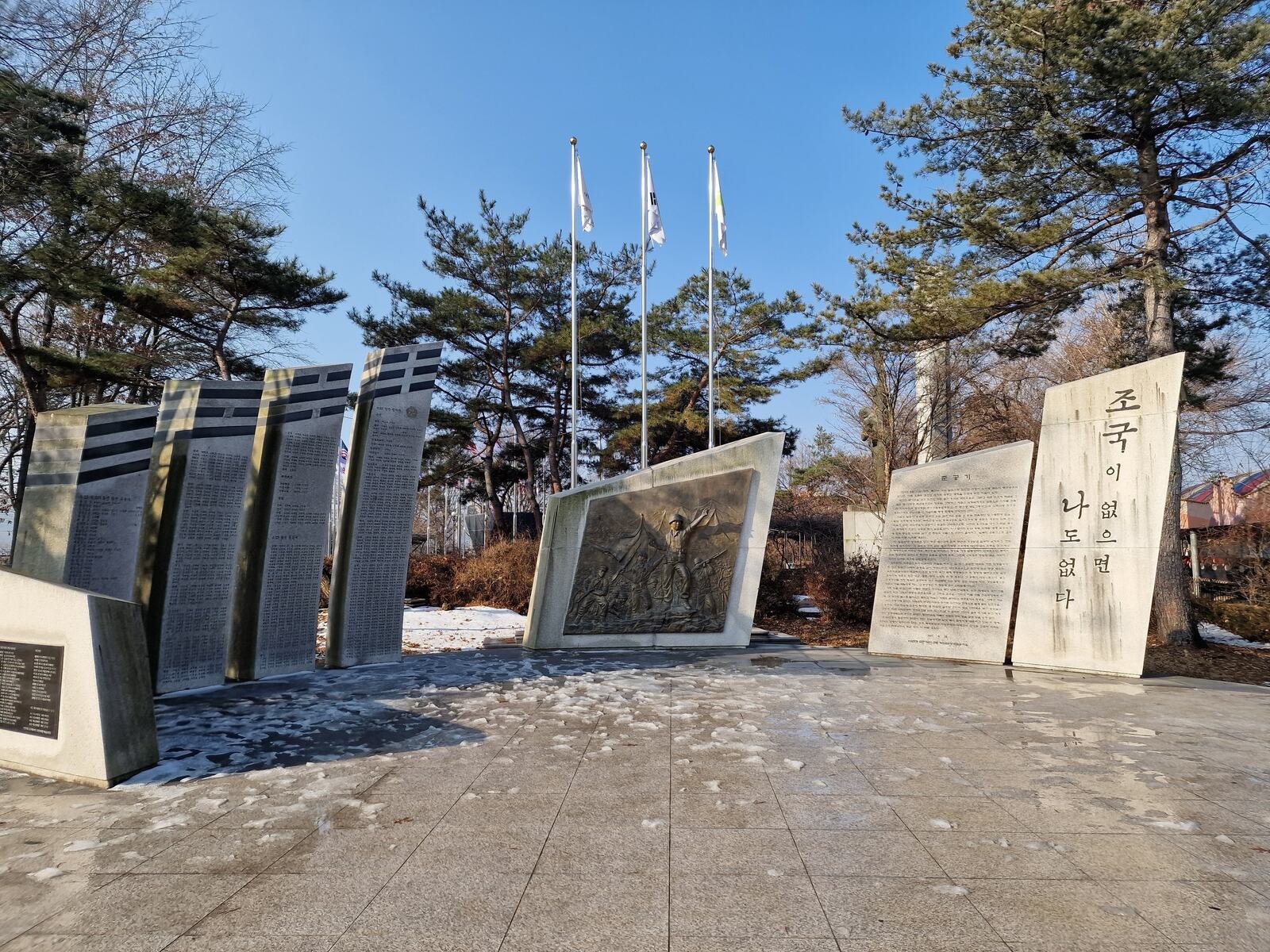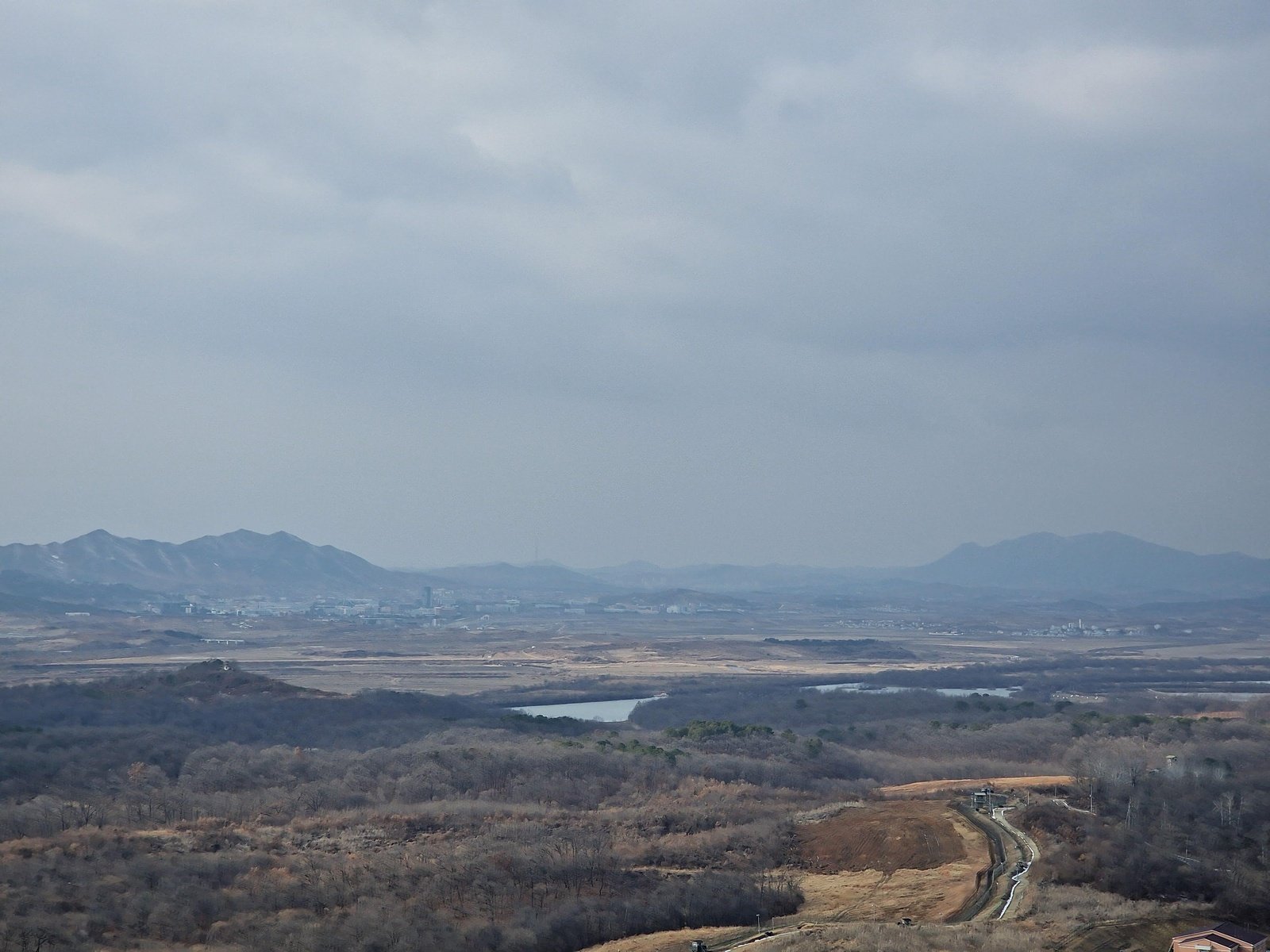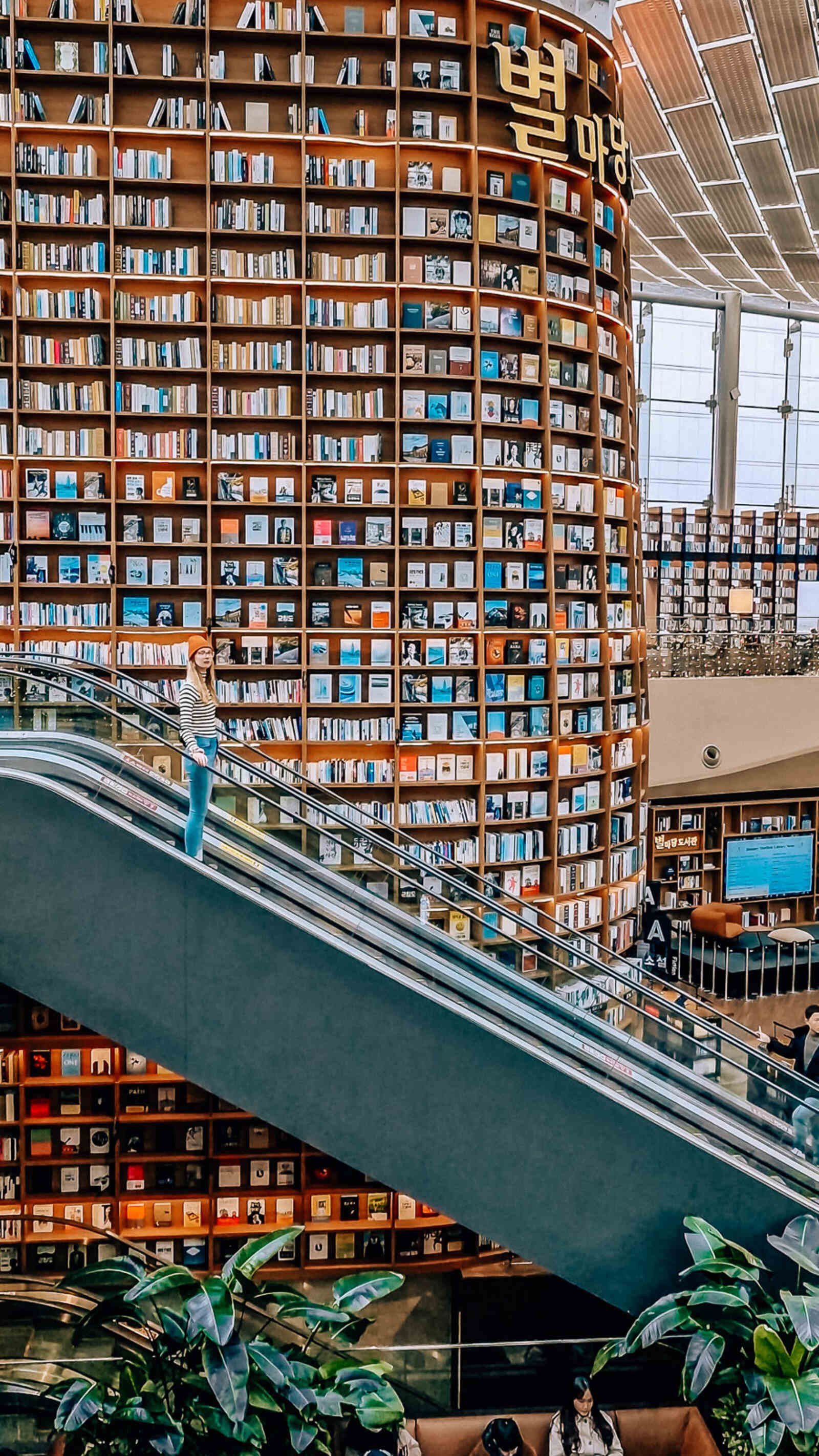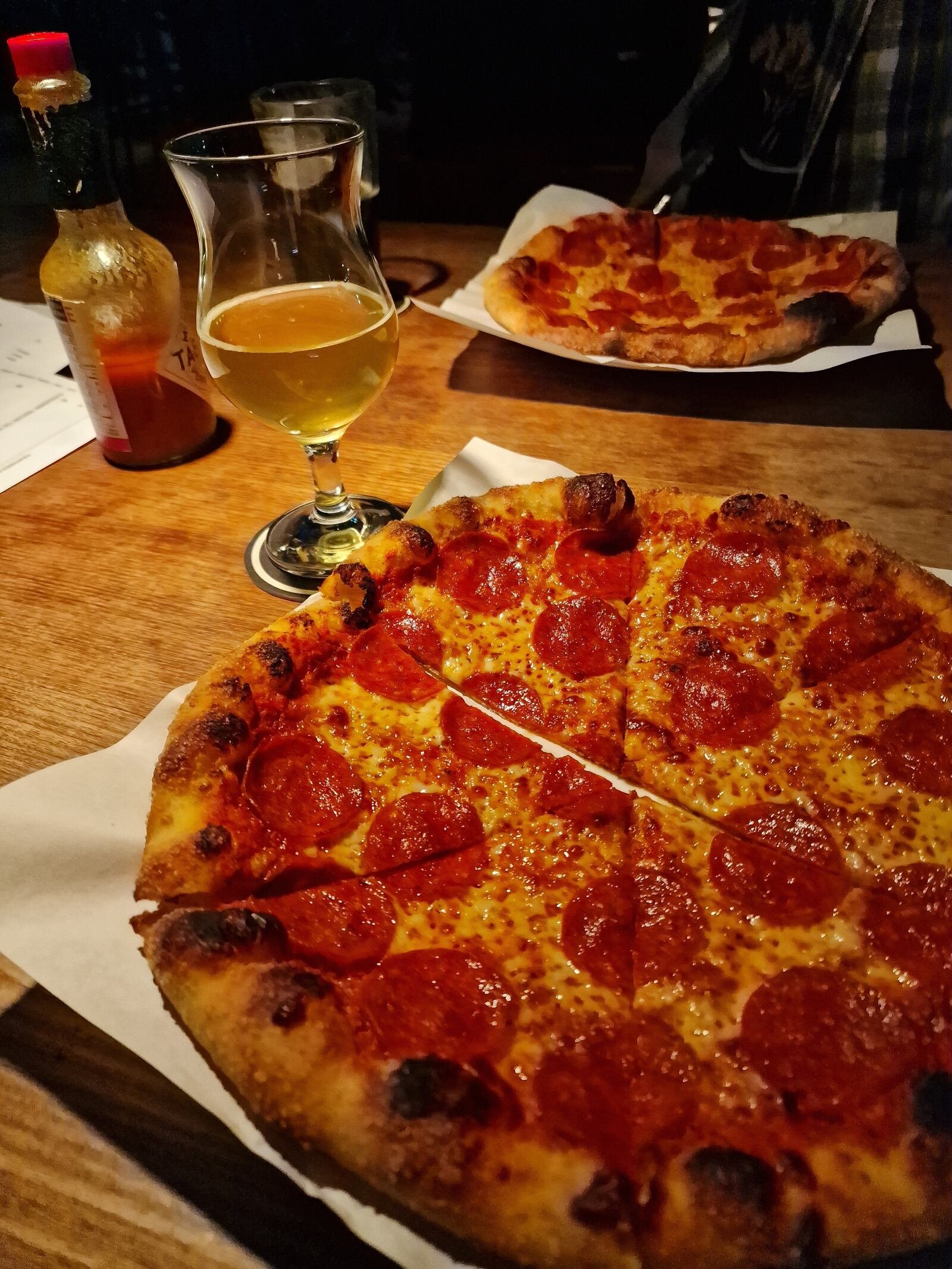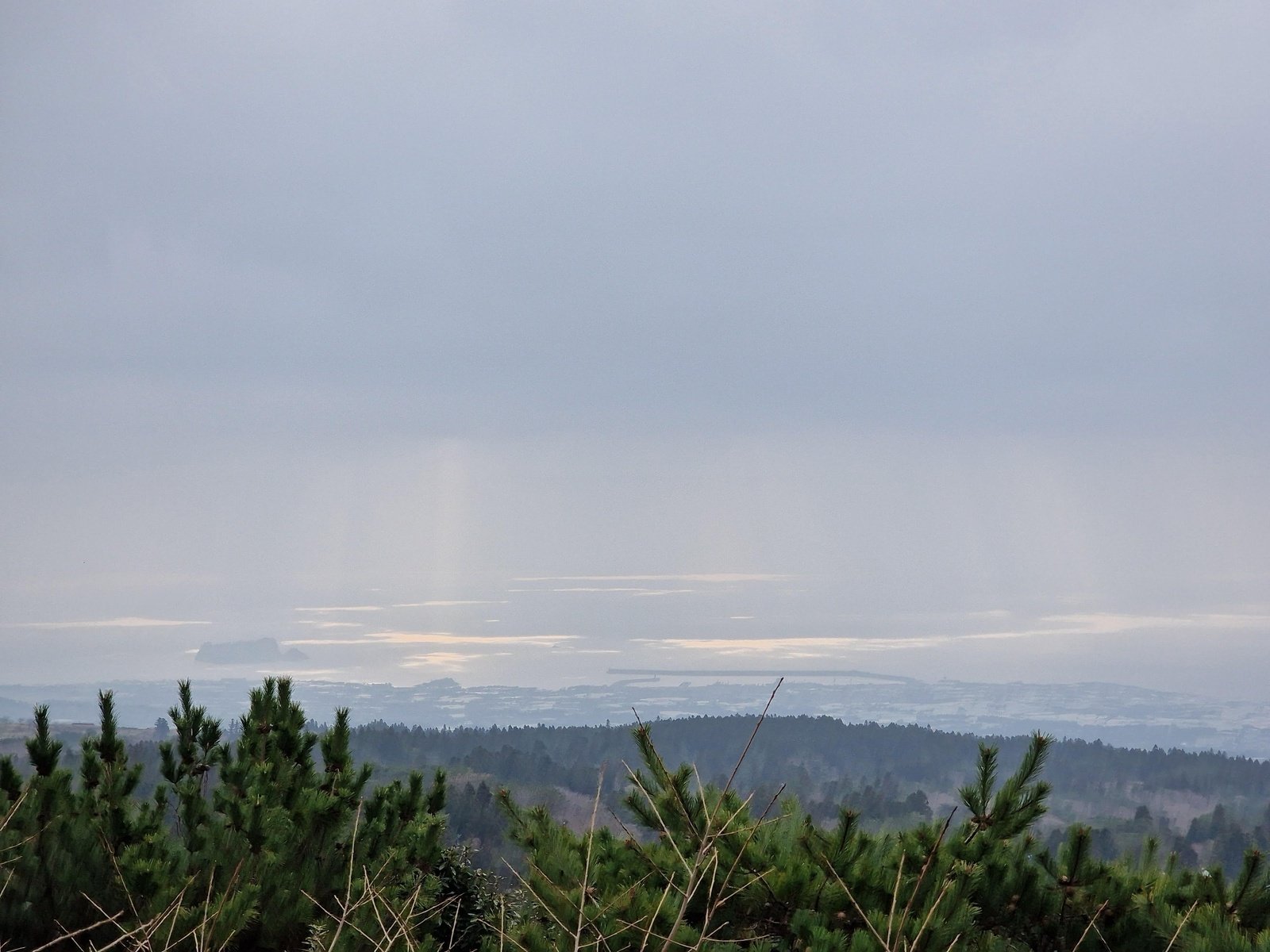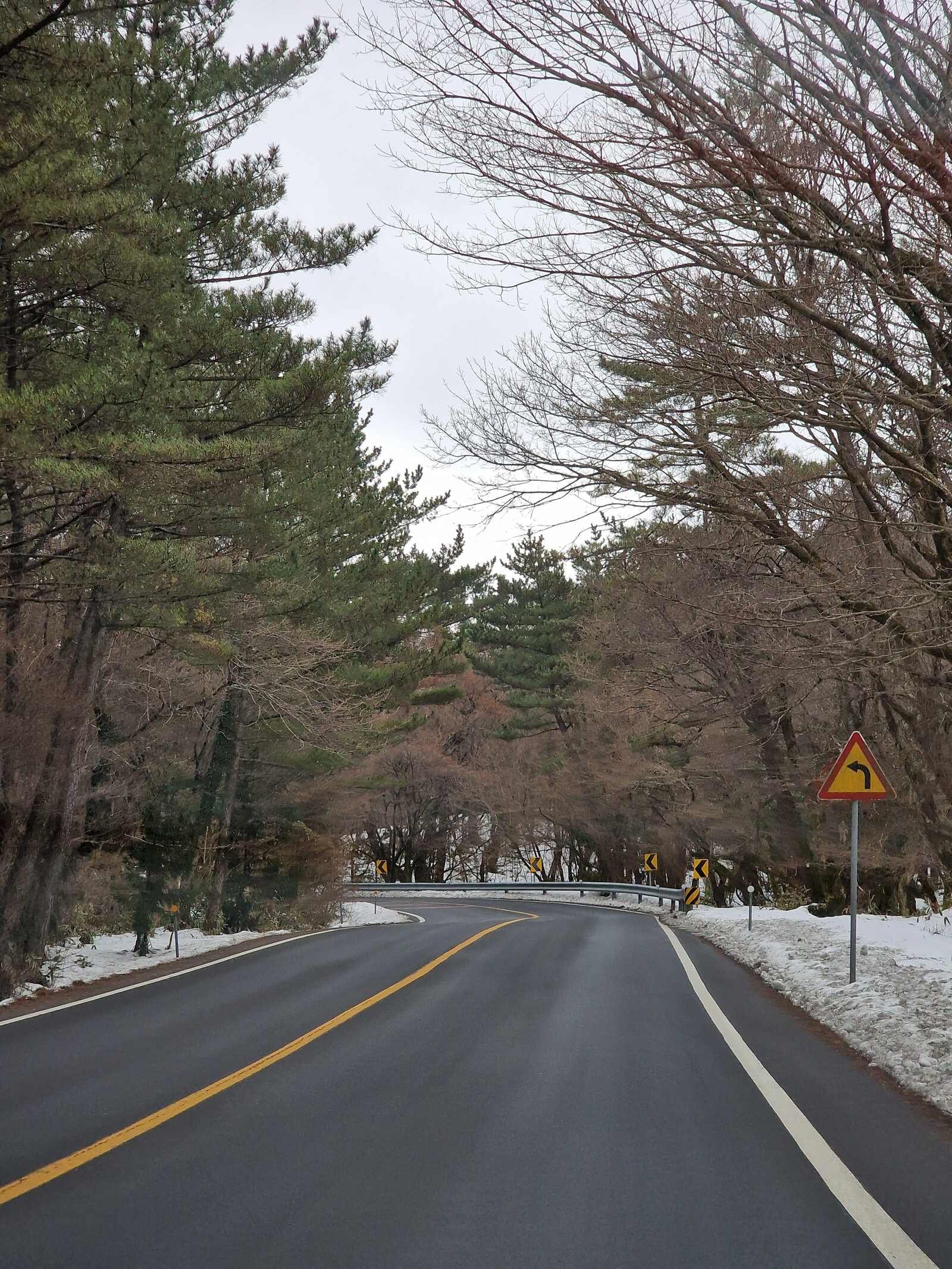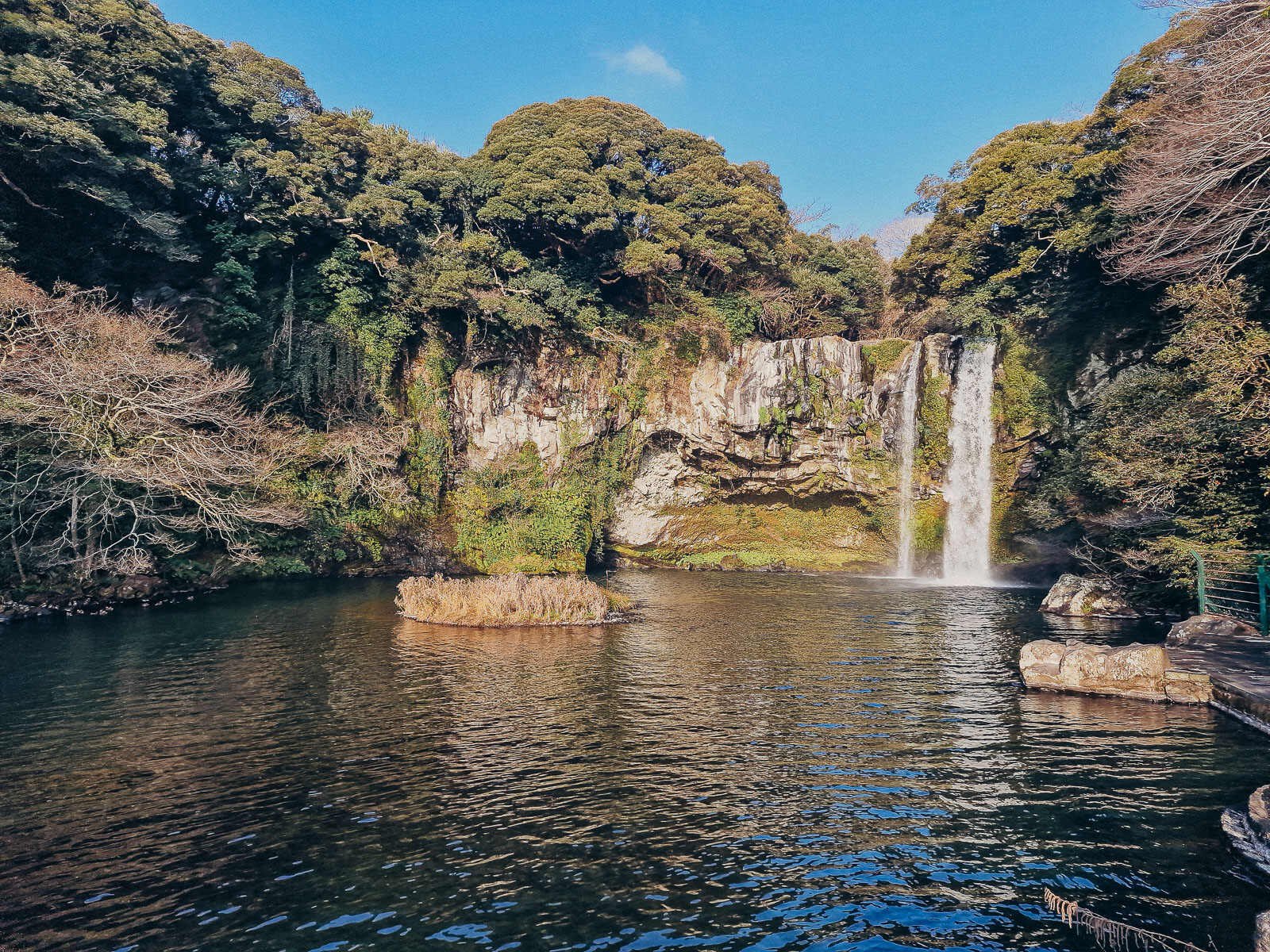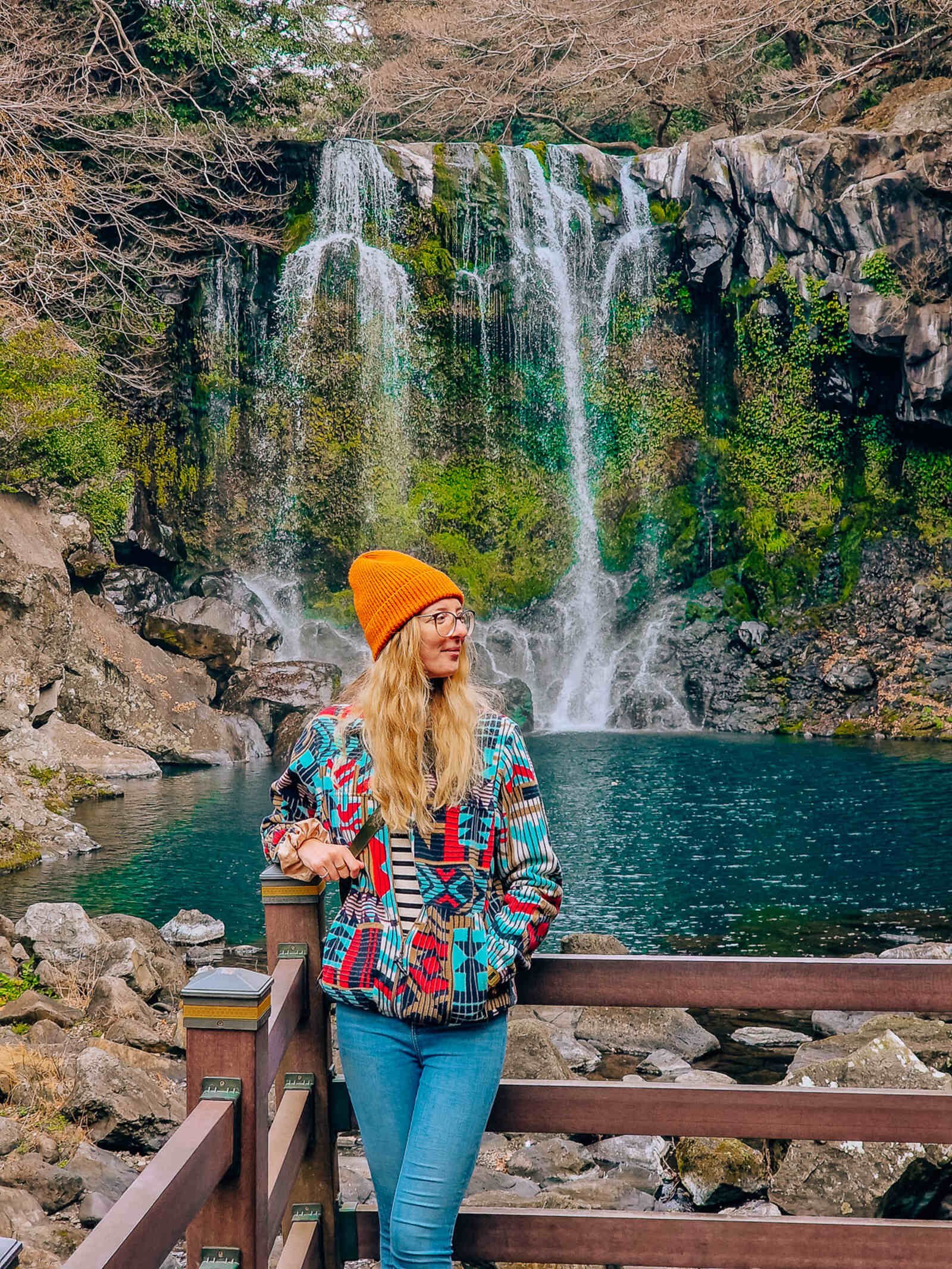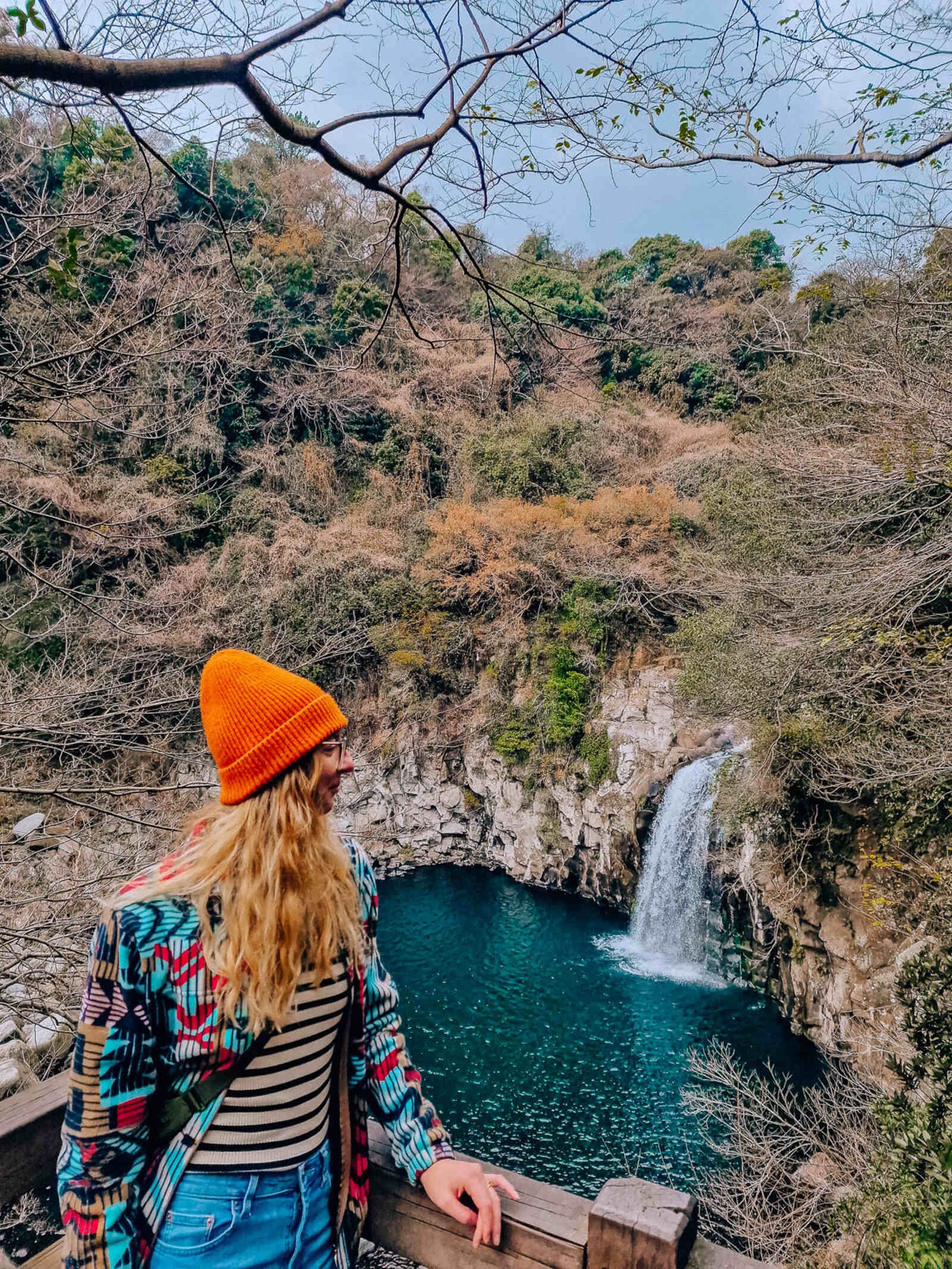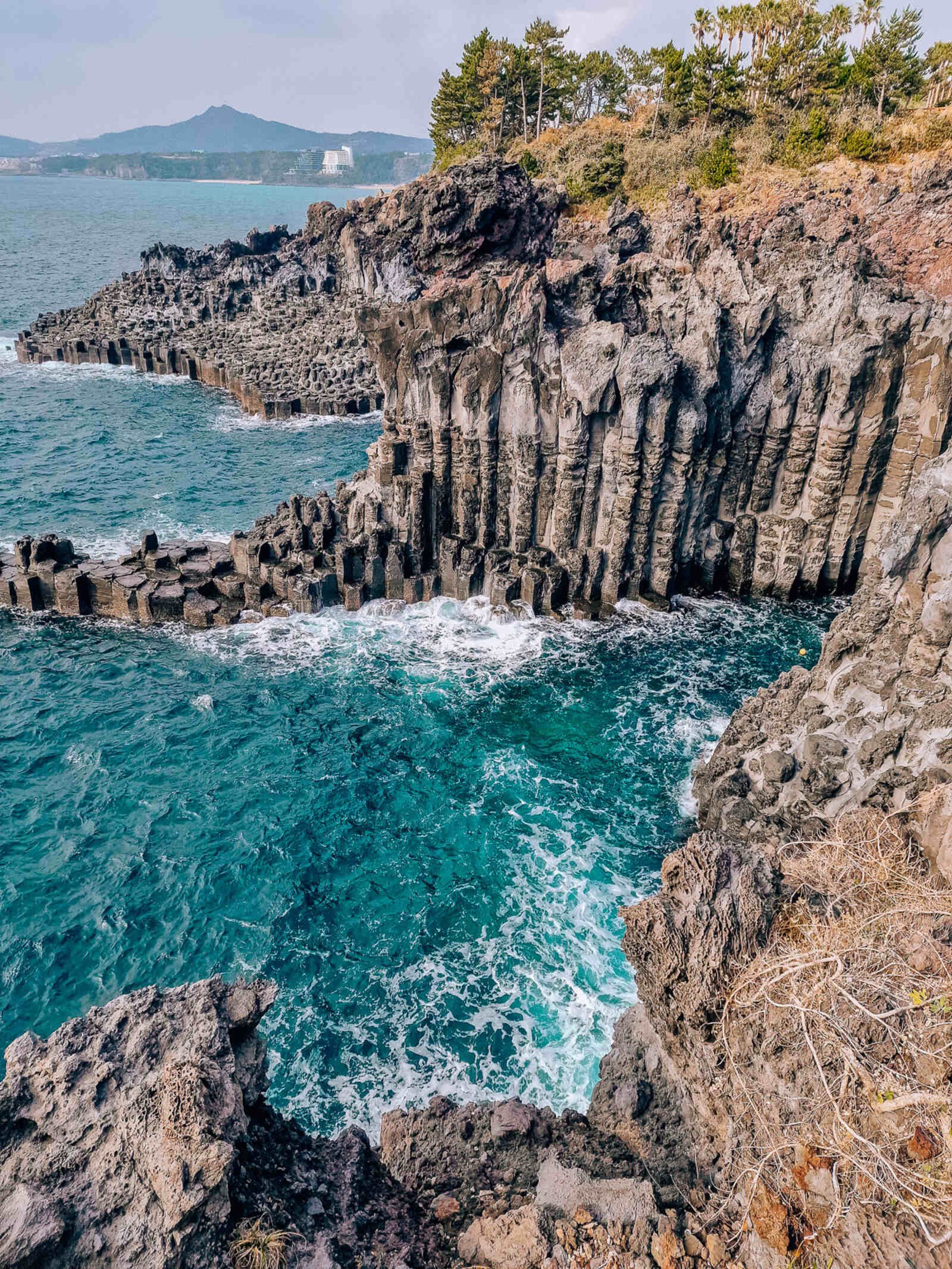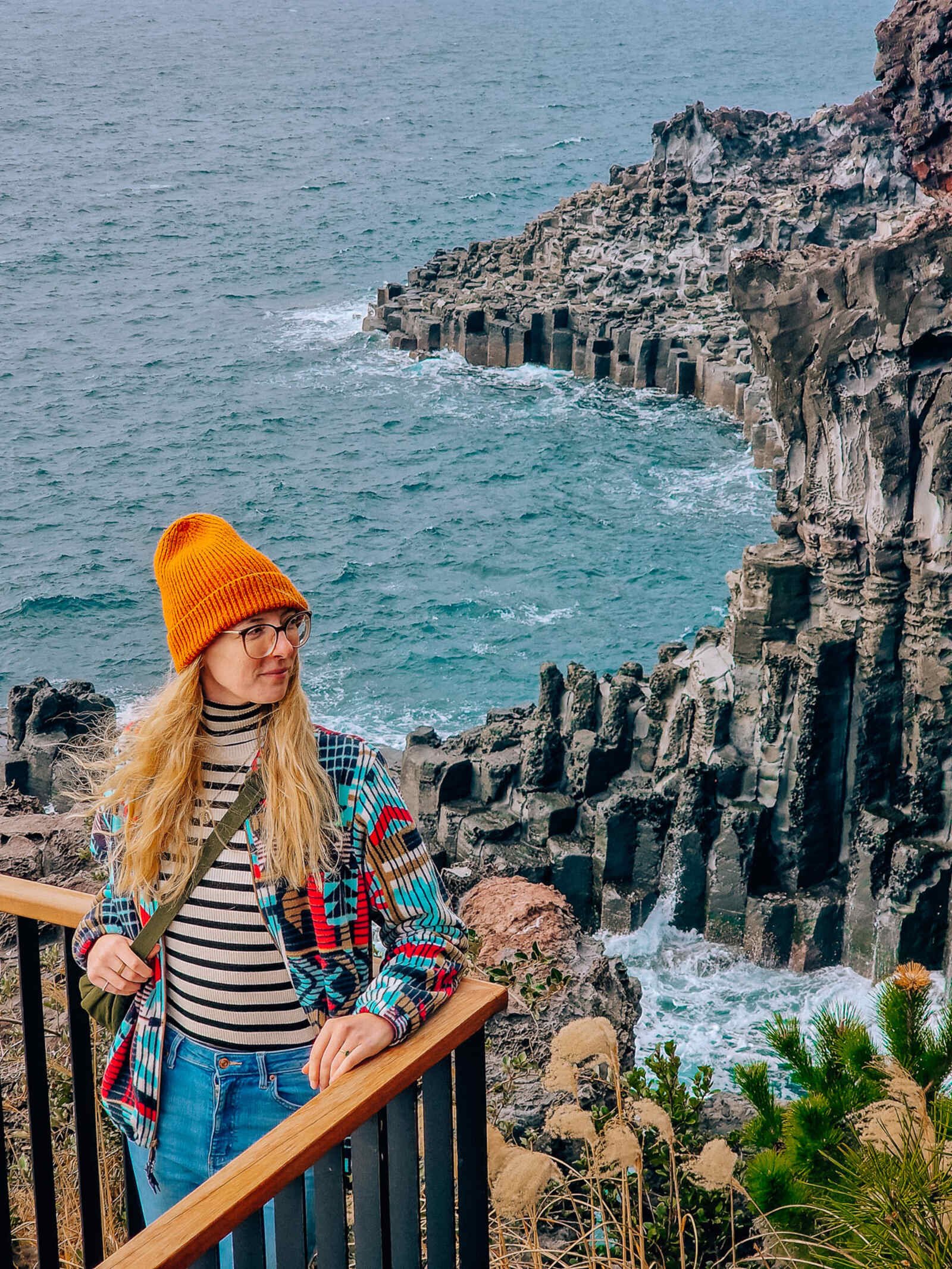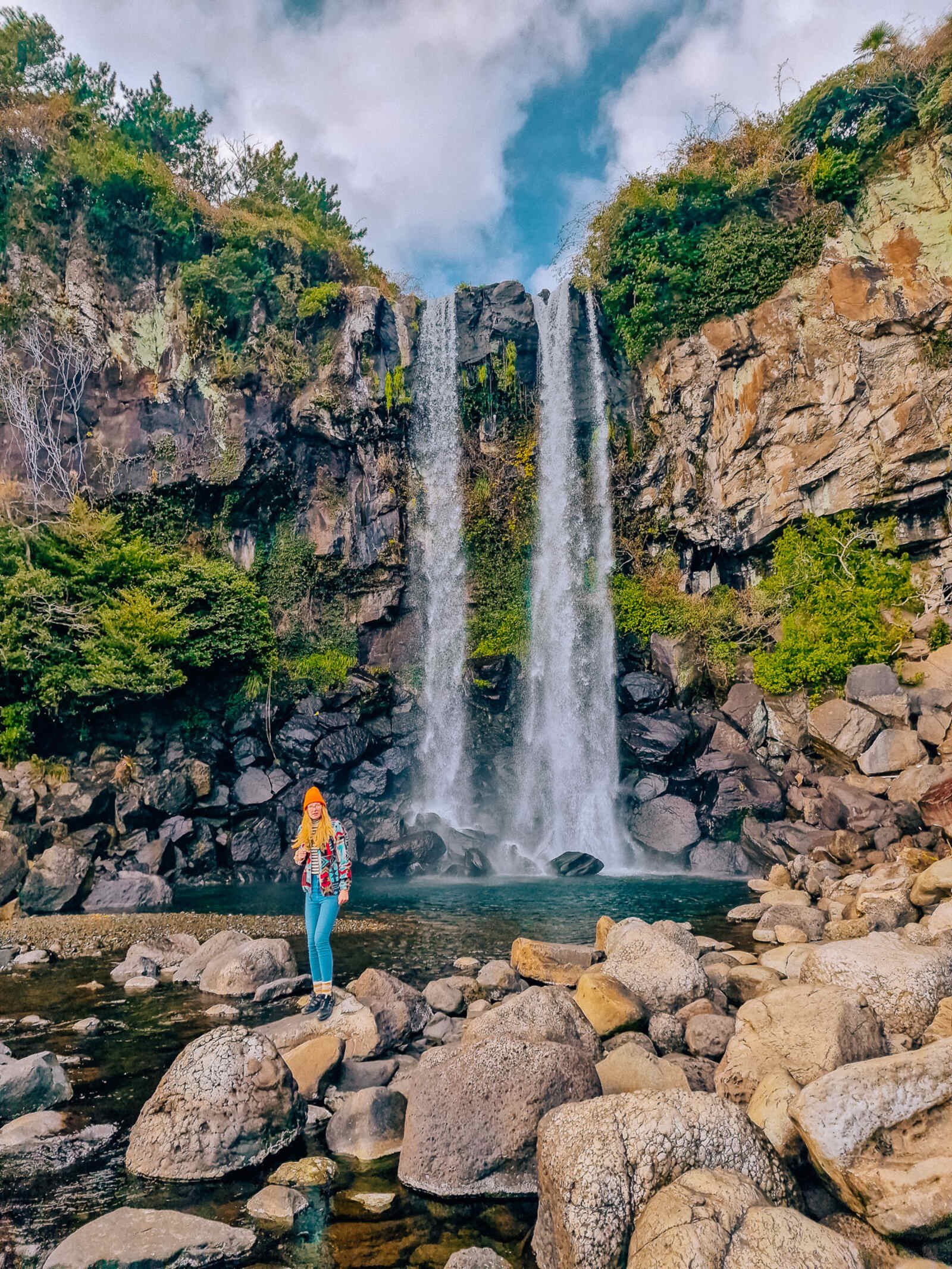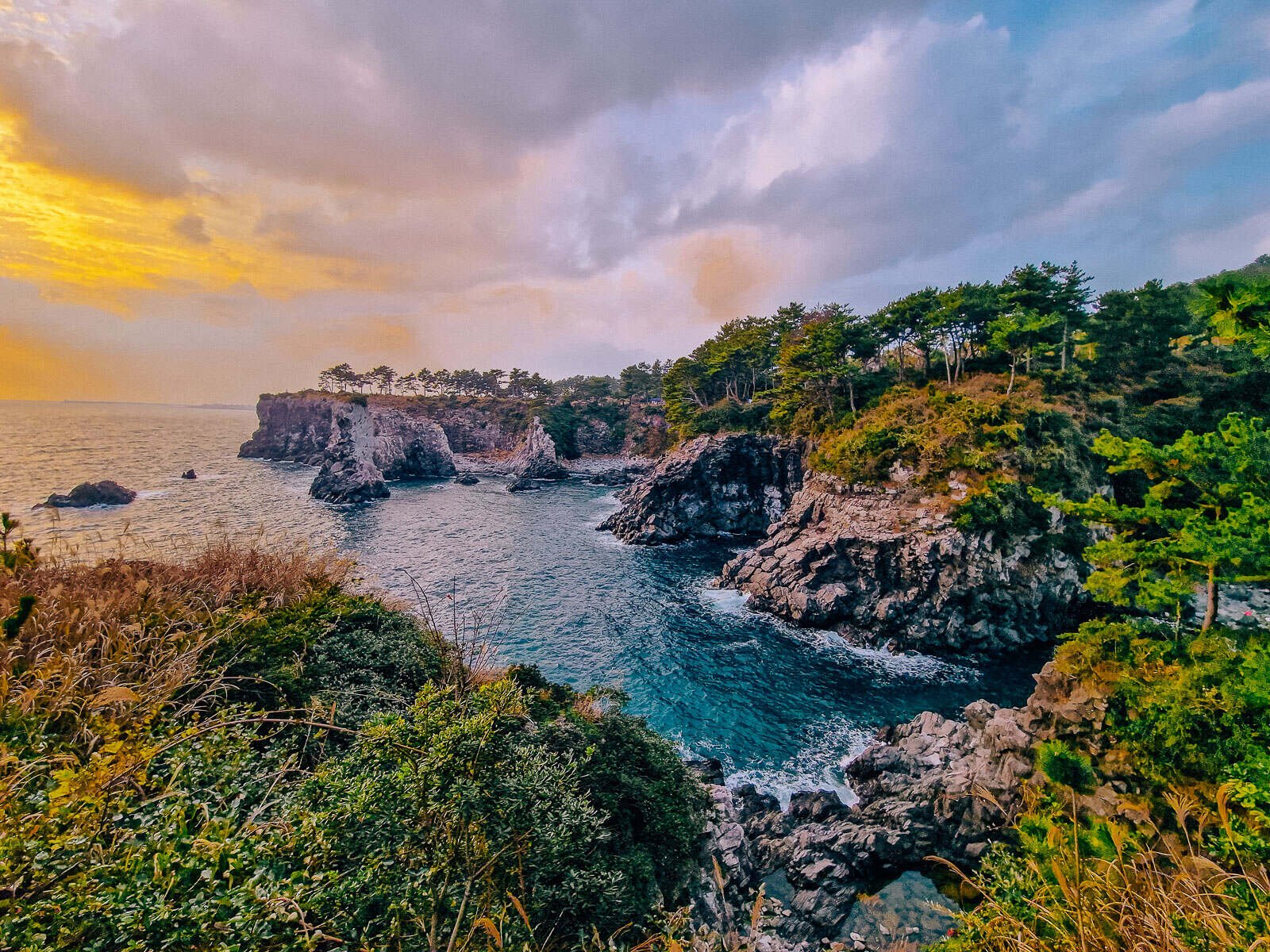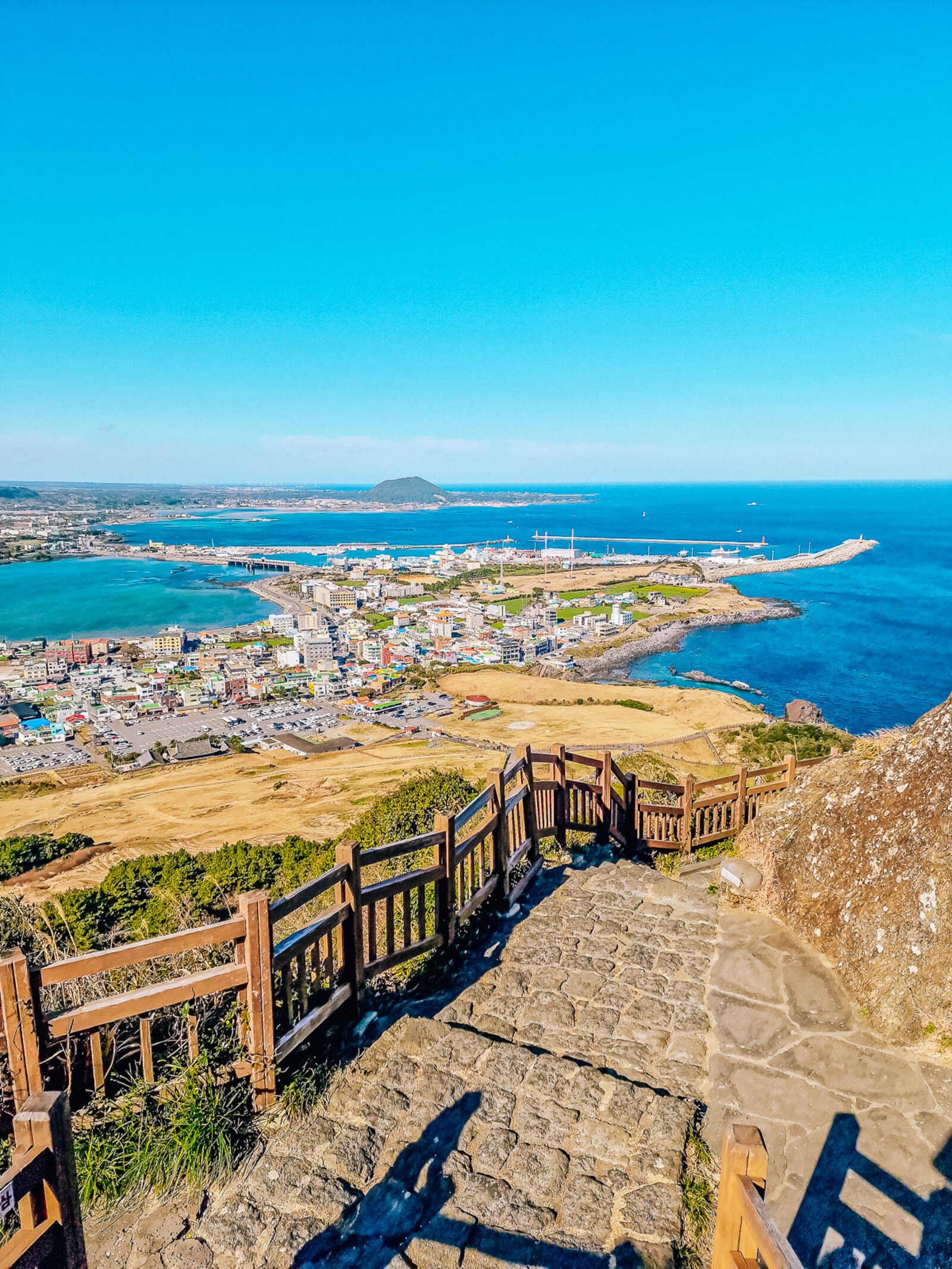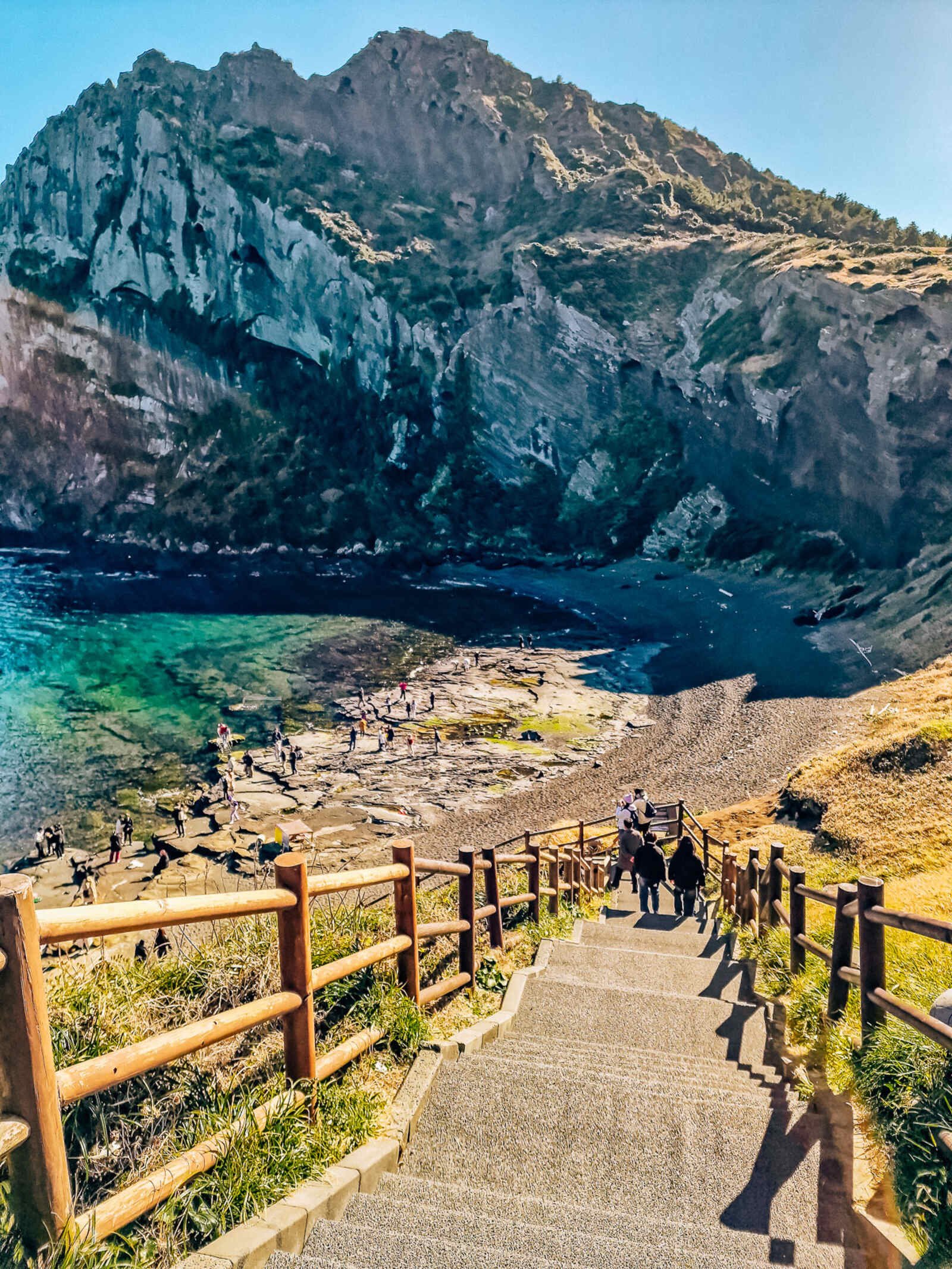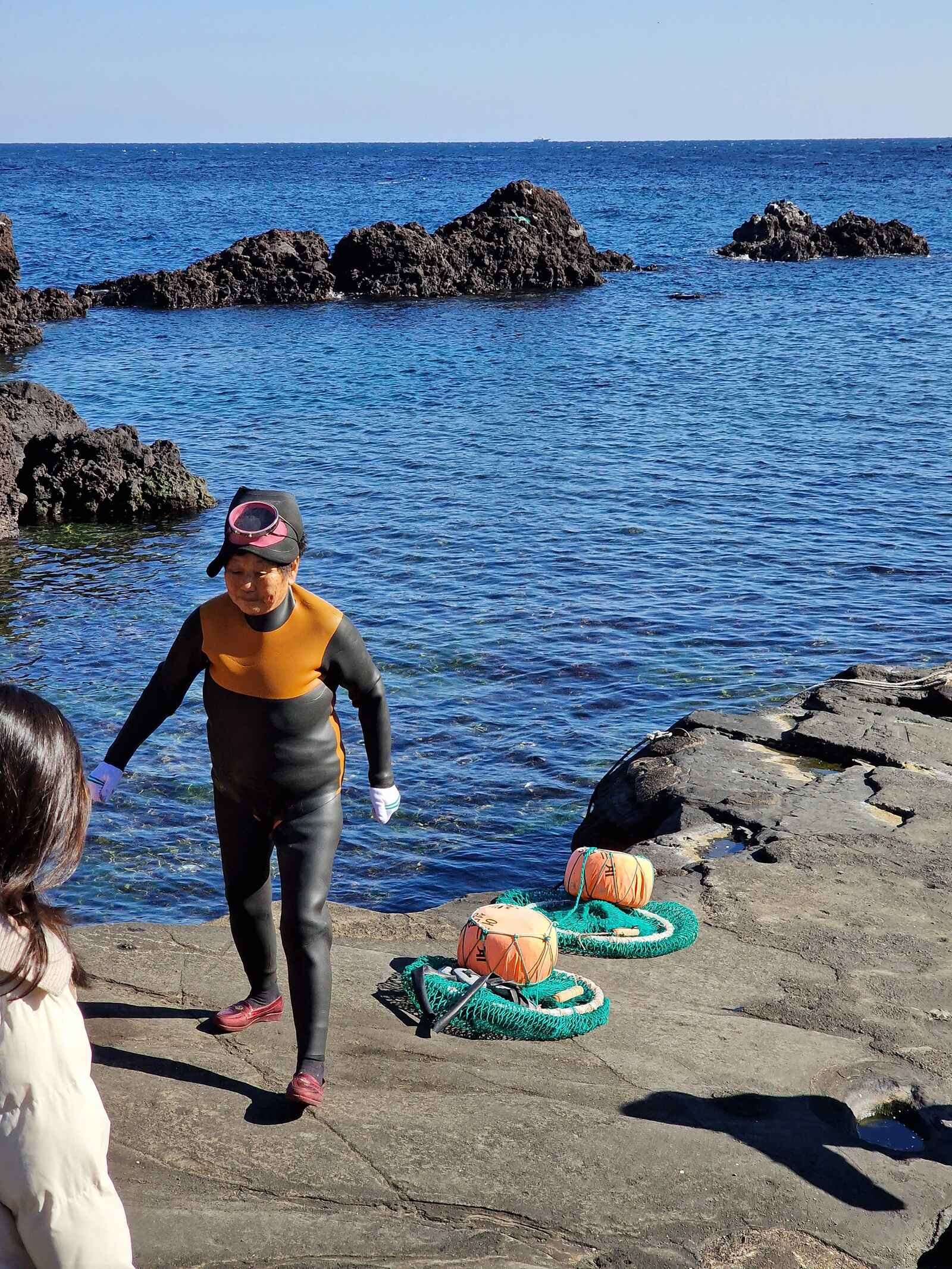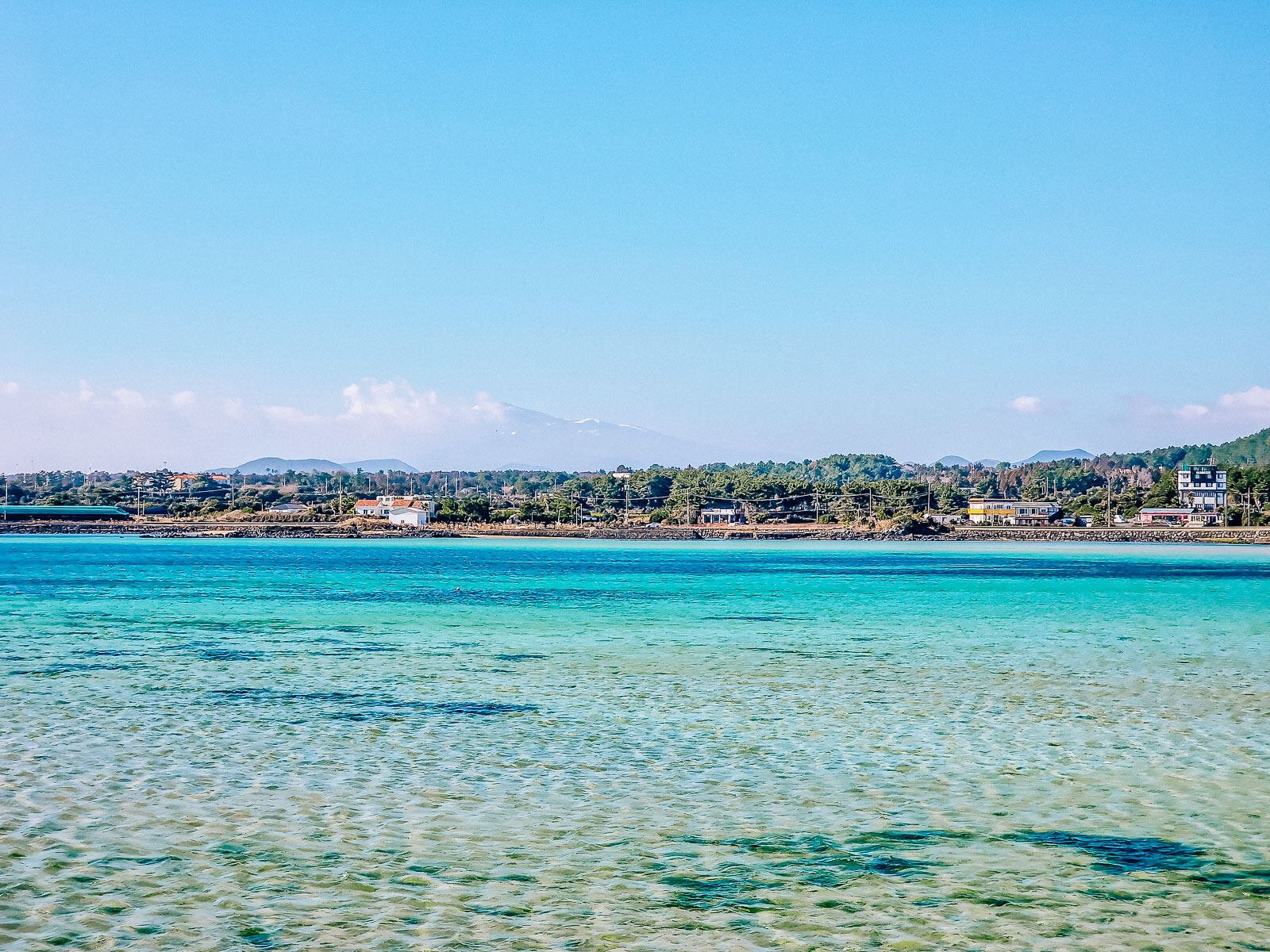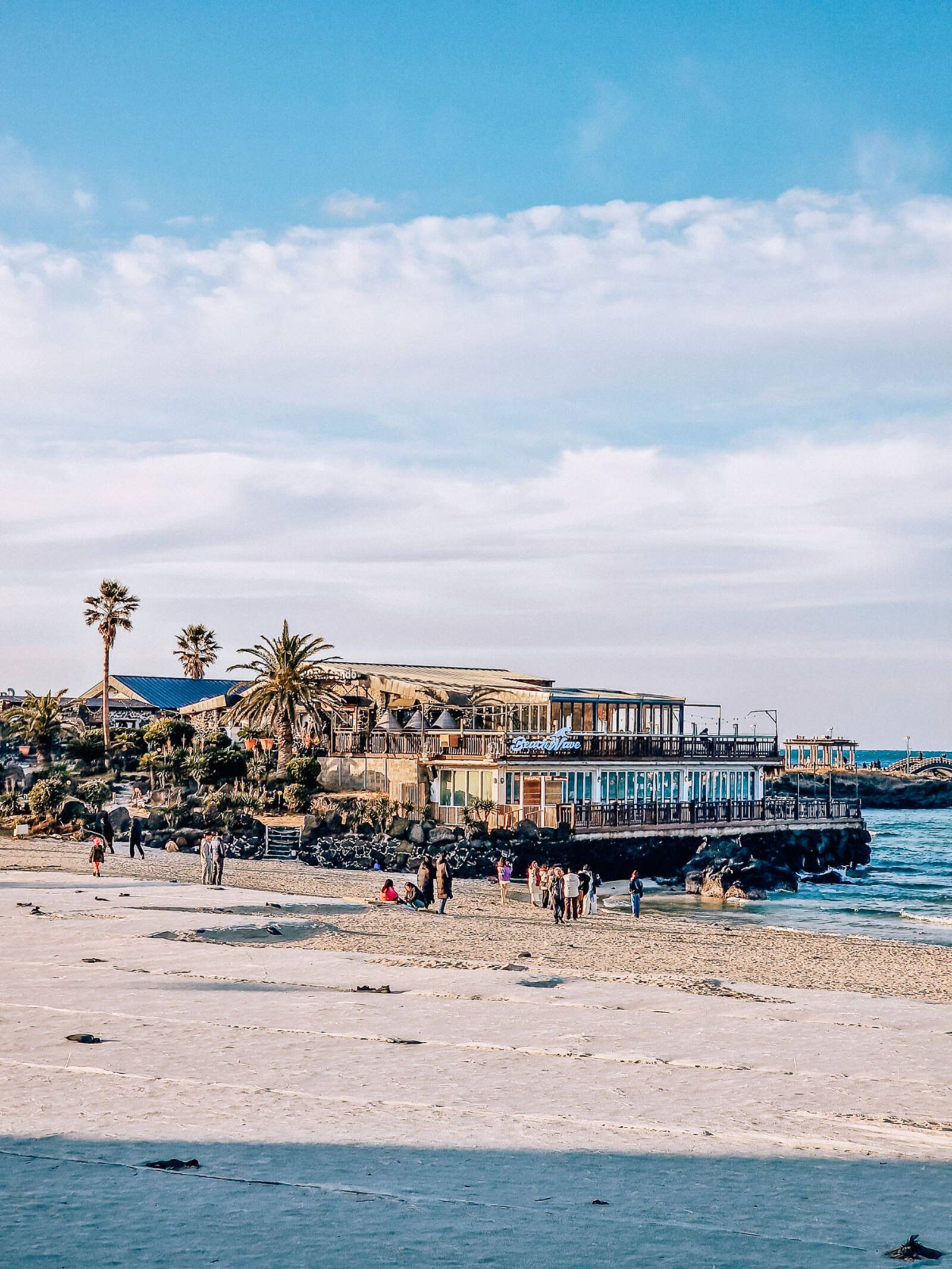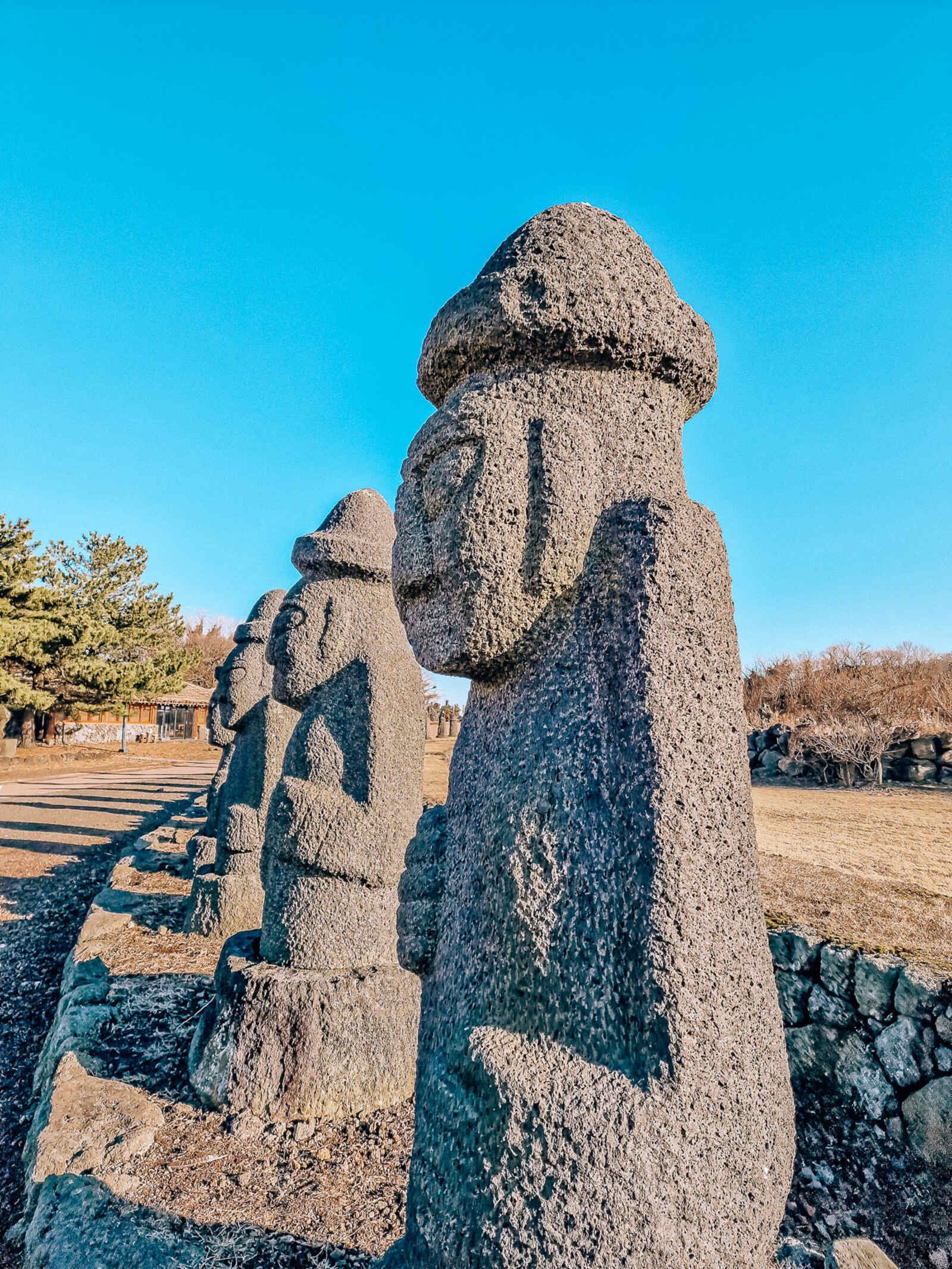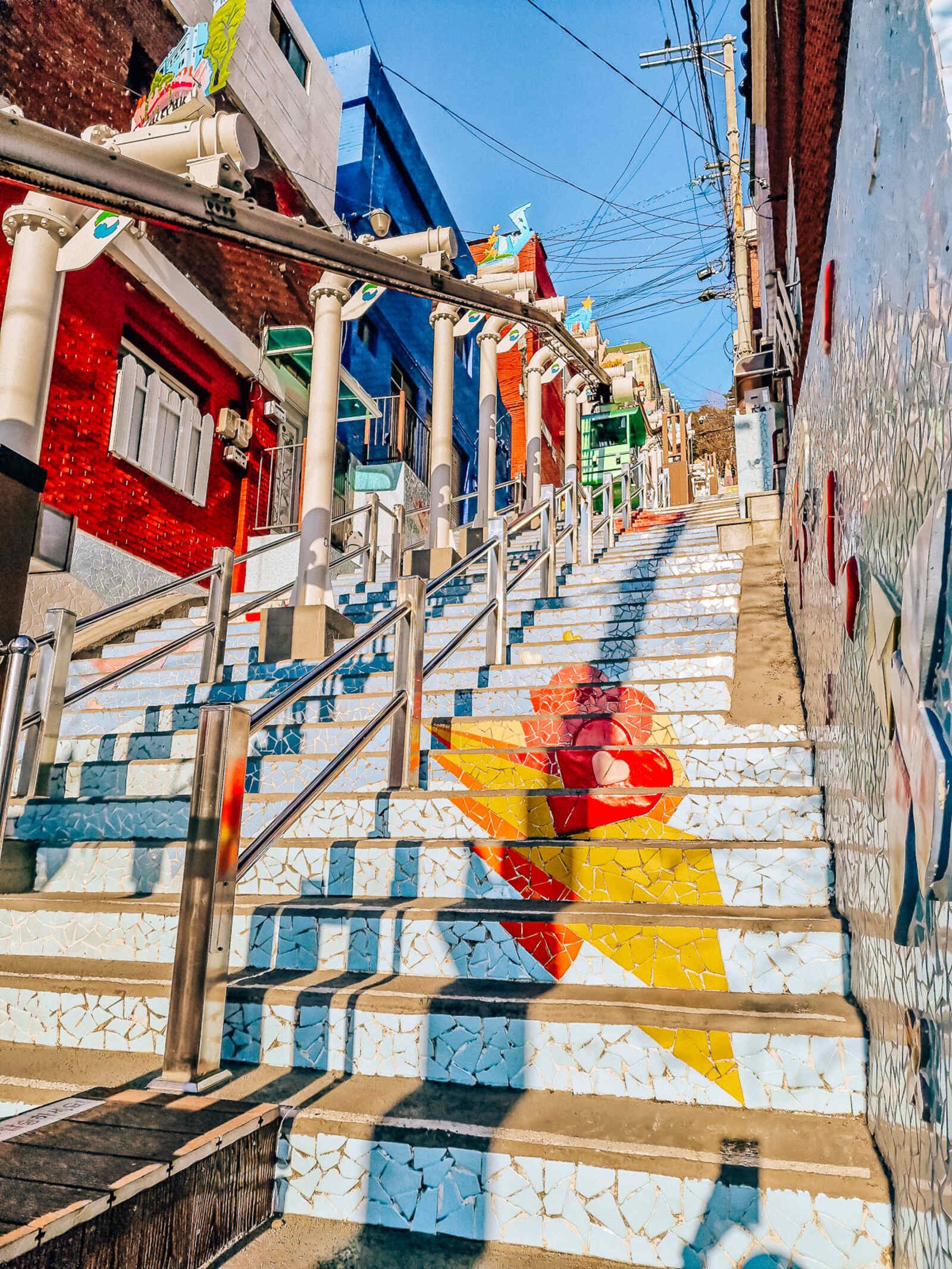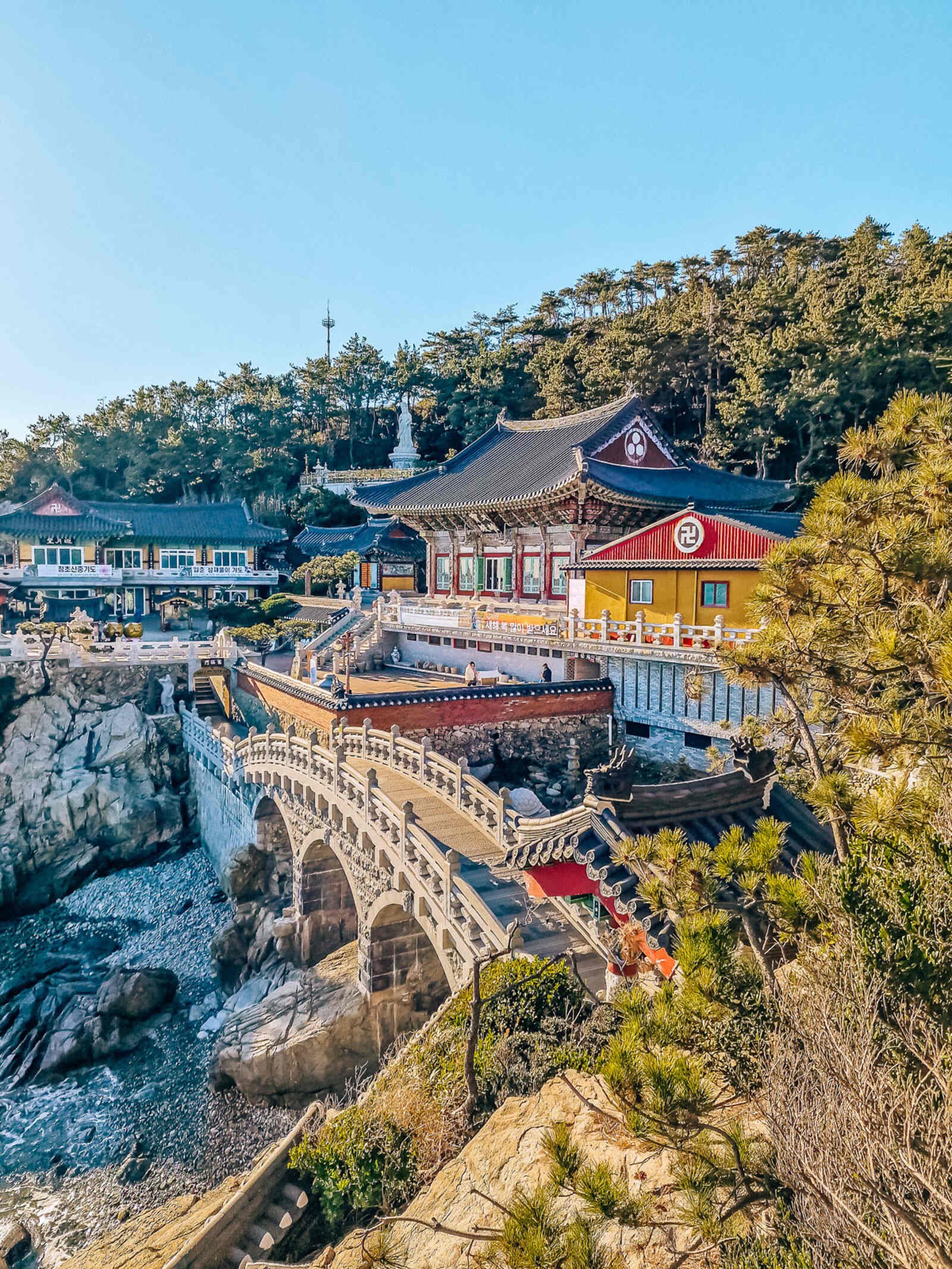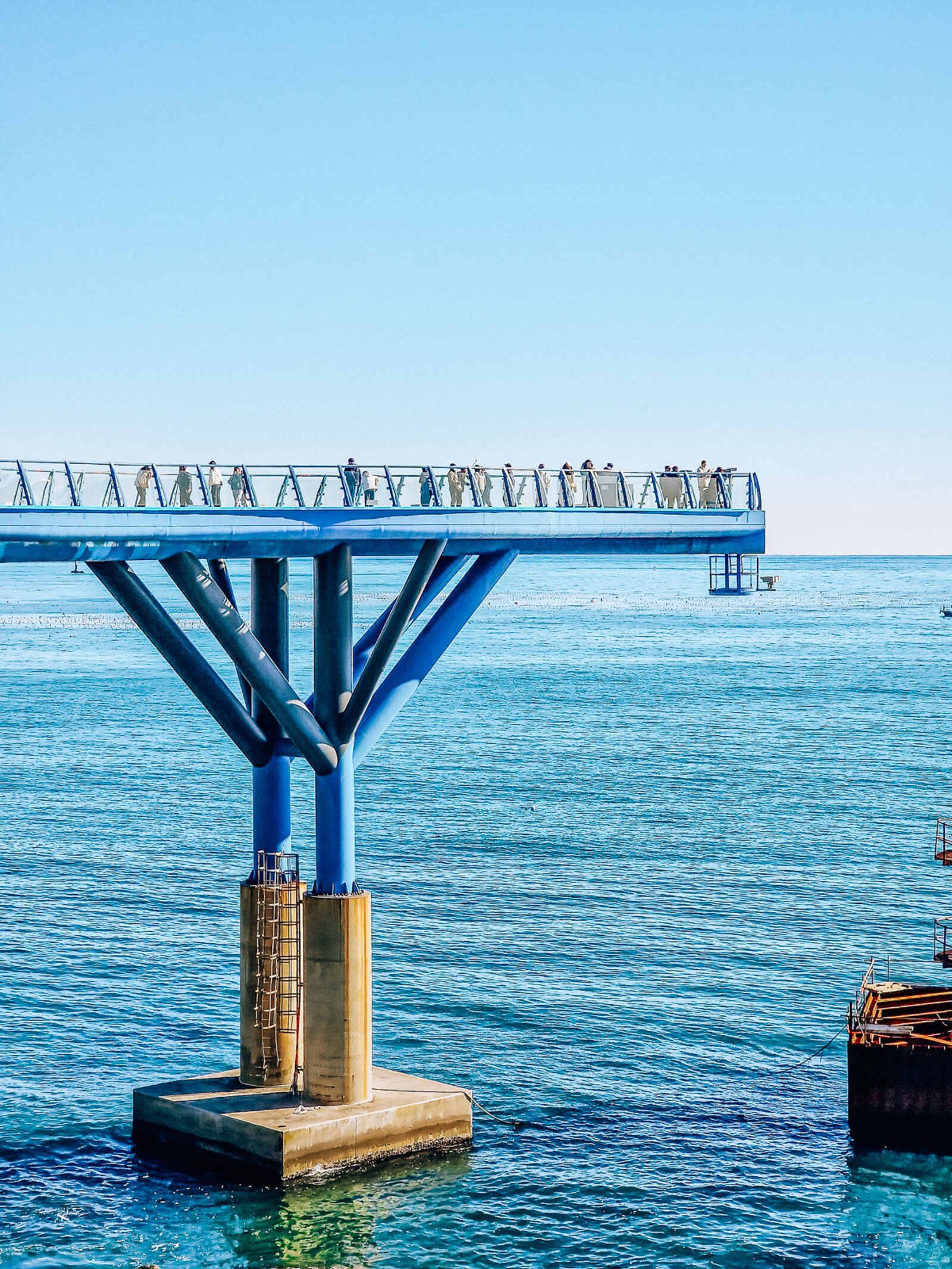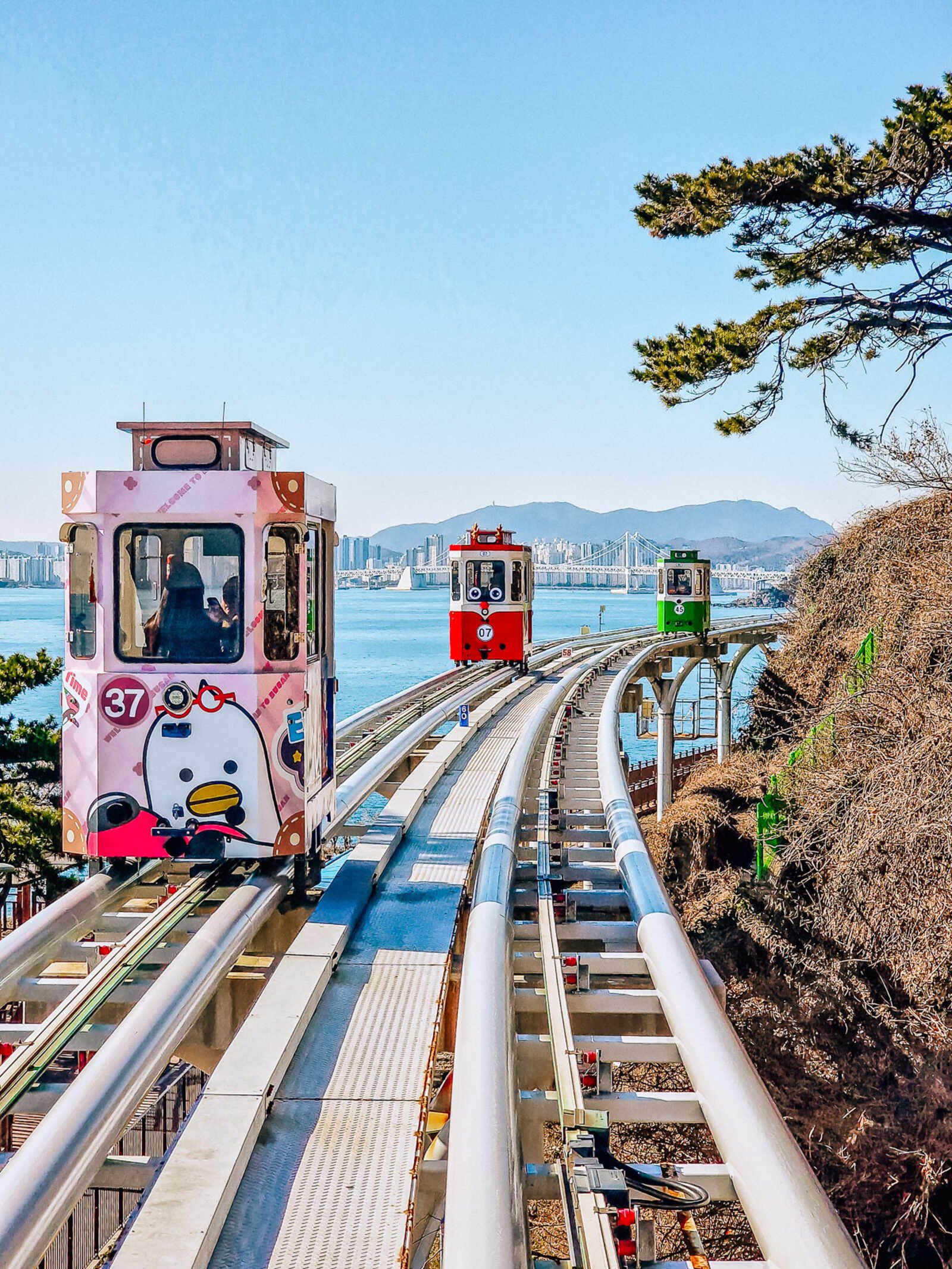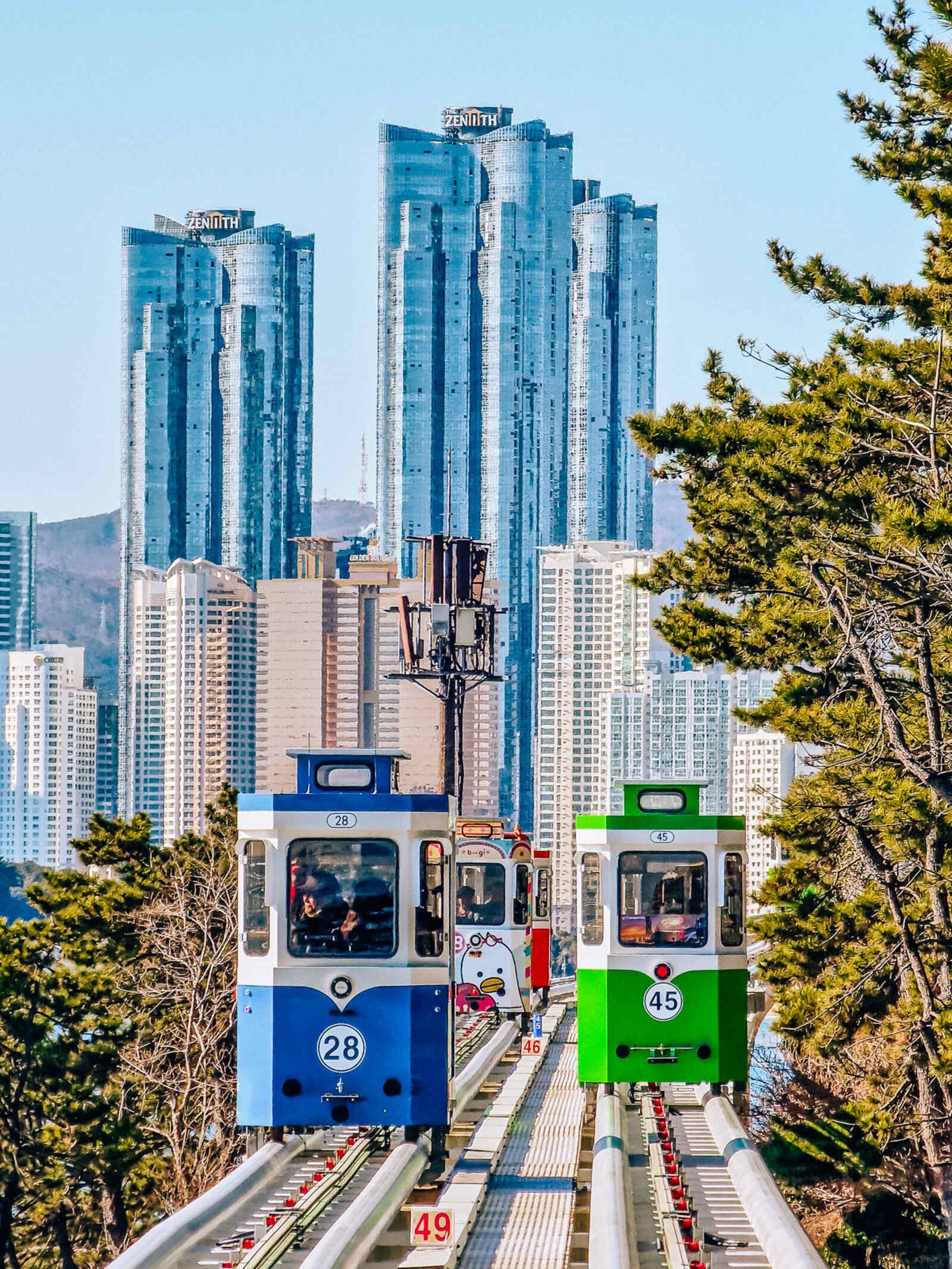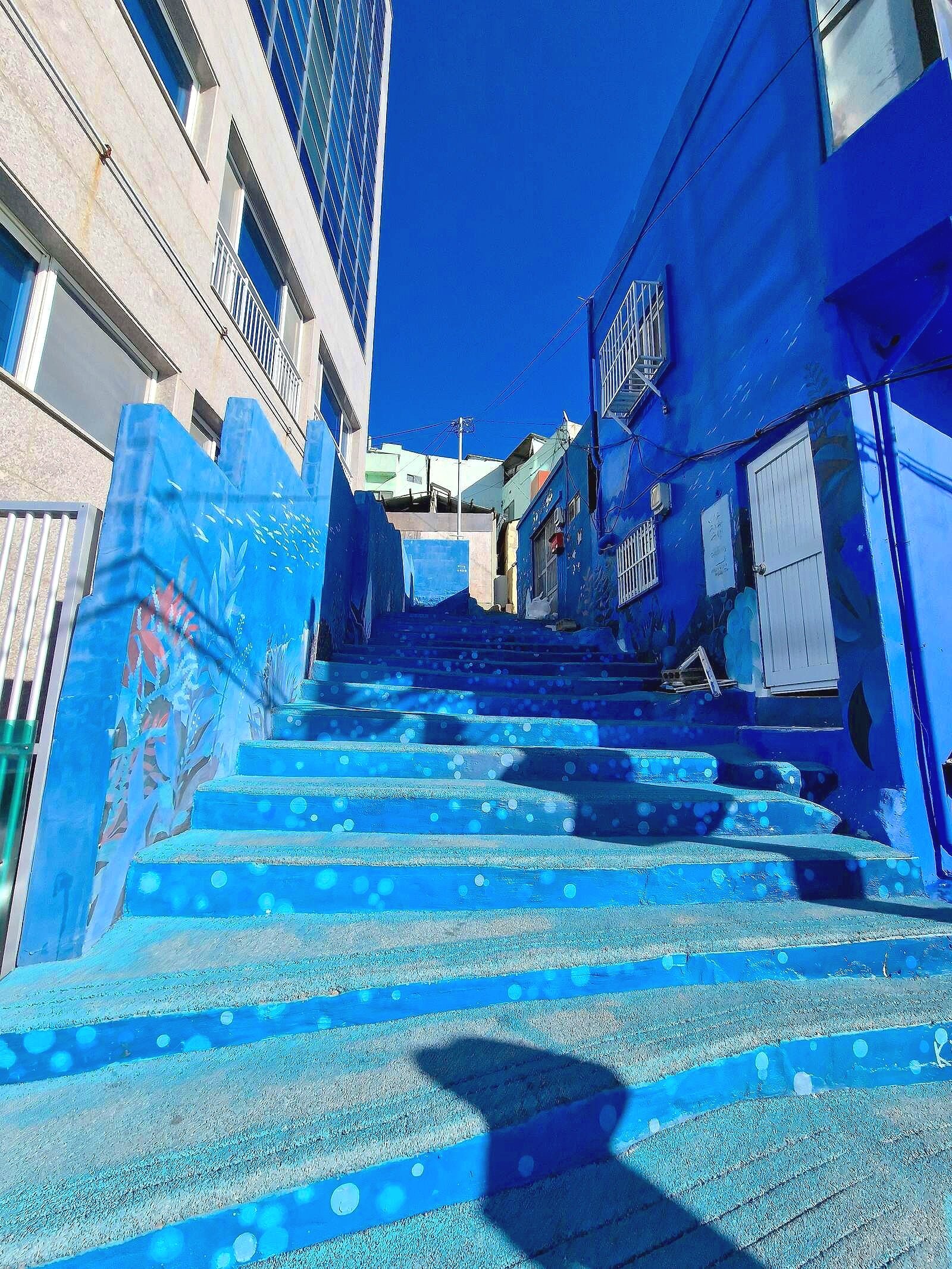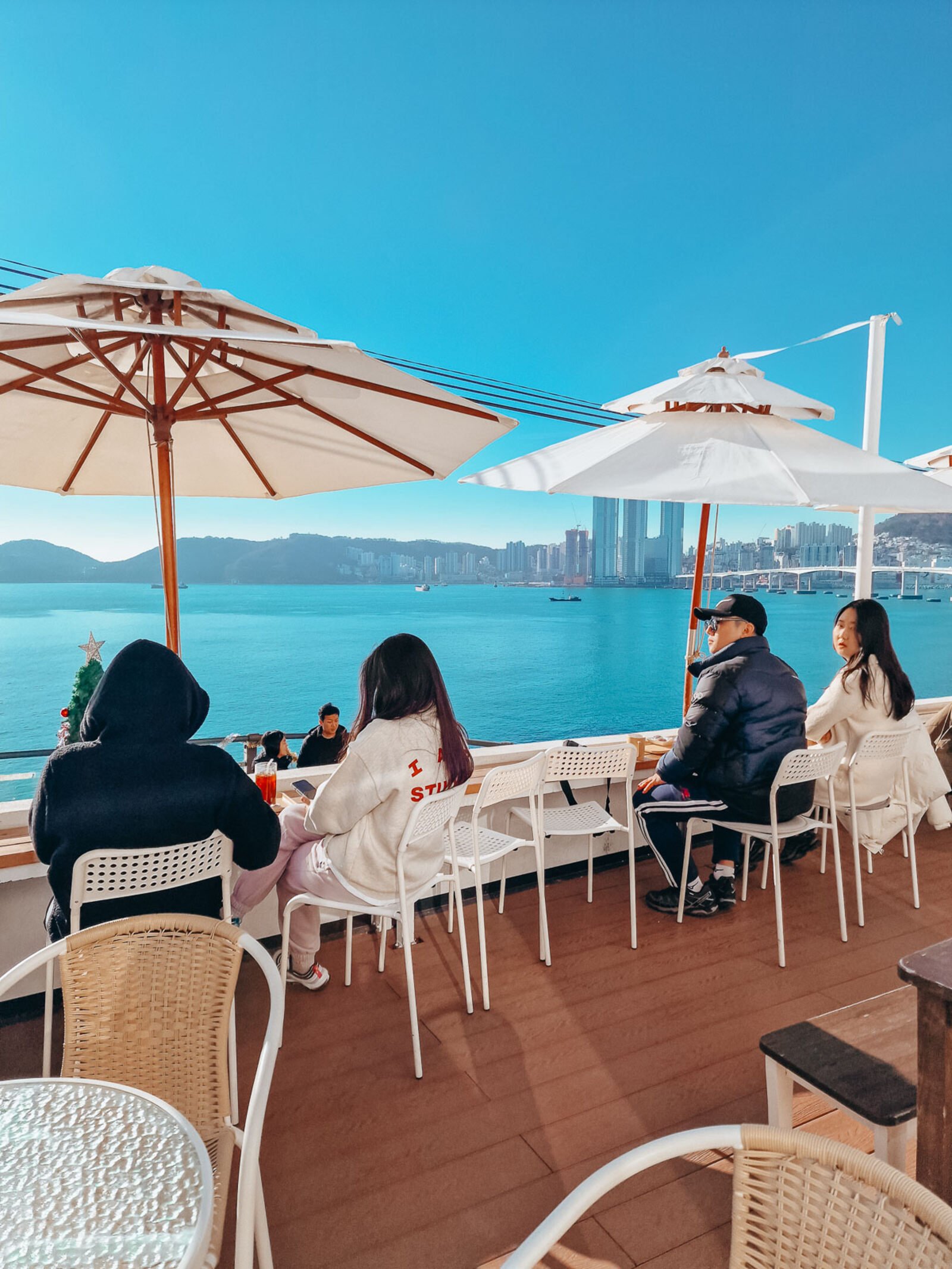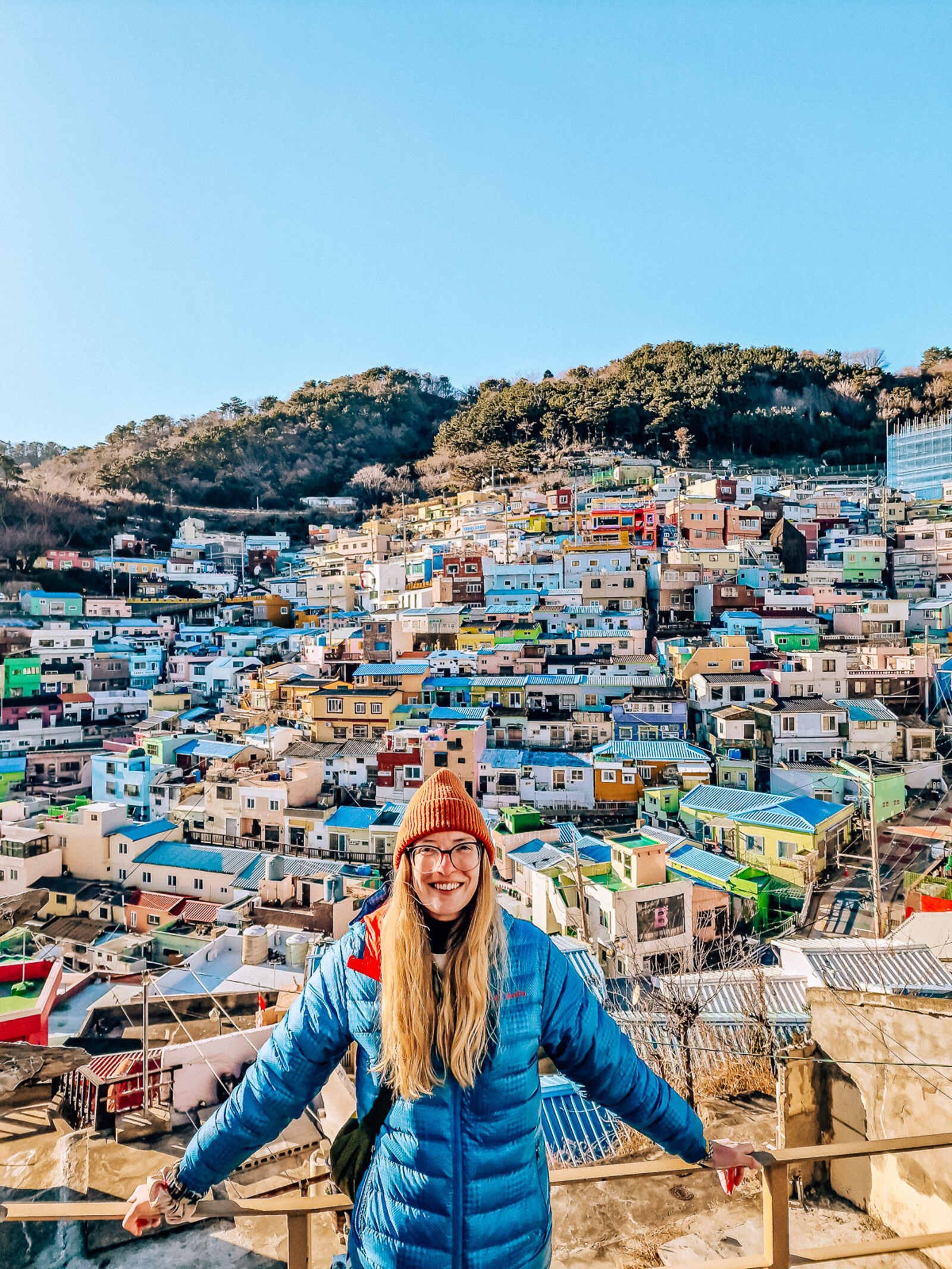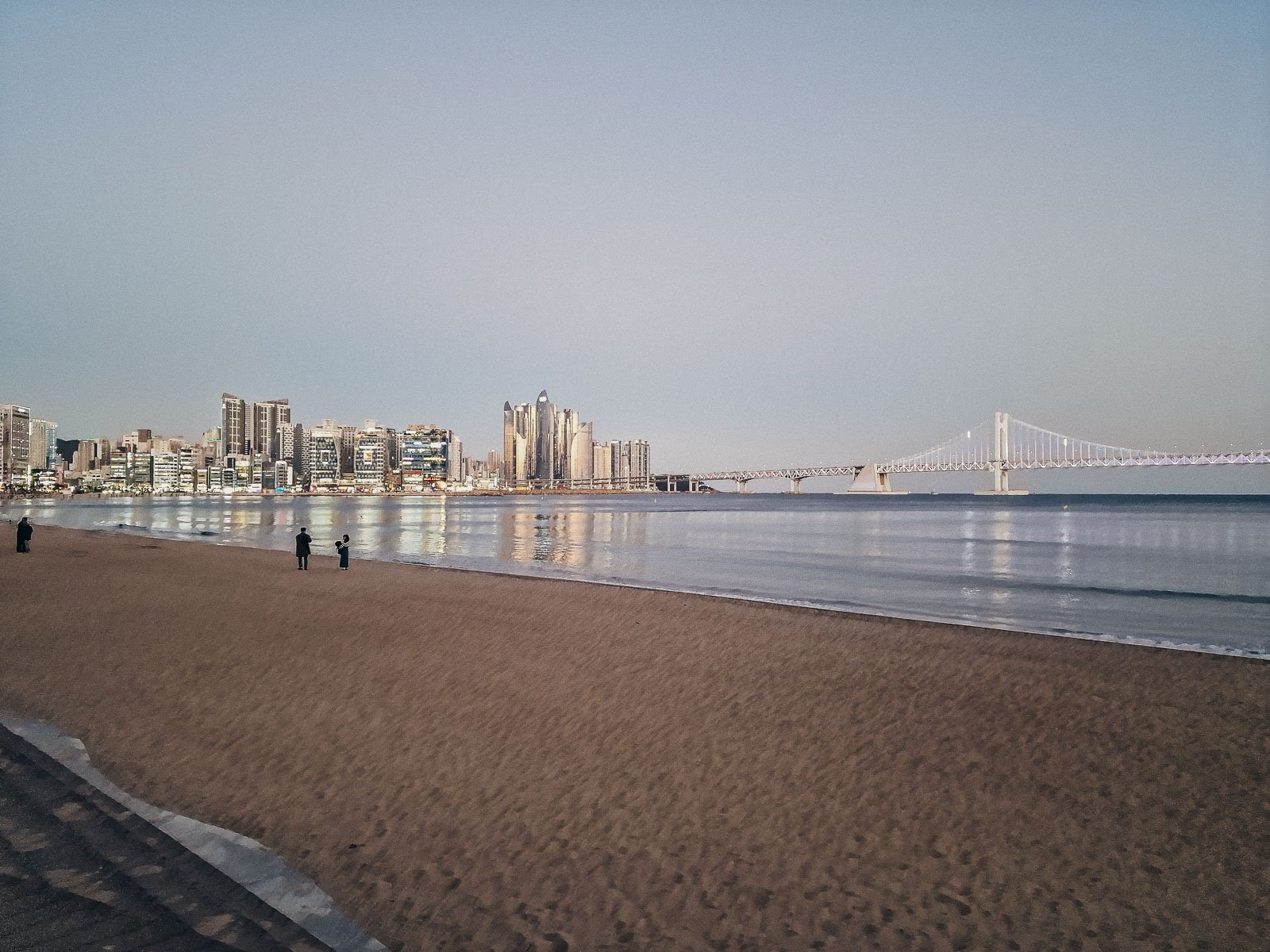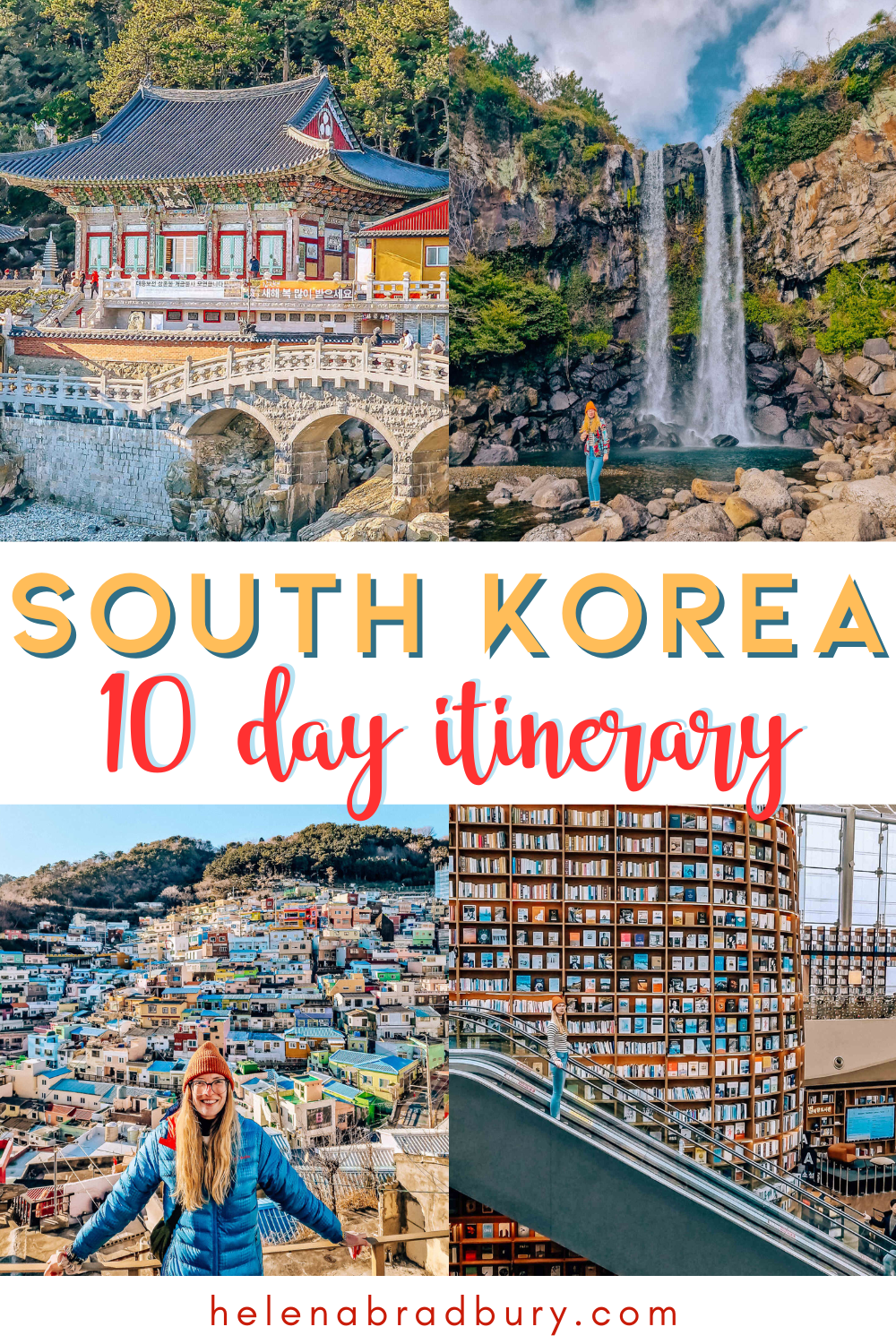I initially thought that a 10 day South Korea itinerary would be plenty of time. But before our trip was finished, I was already planning return trips in the spring and summer to see the cherry blossom in Korea and experience the hiking trails and mountains in the country.
Okay, I was getting ahead of myself.
But I seriously do hope to return one day soon because those 10 days in Korea made me fall in love with the country and eager to see more!
That being said, I do think that a 10 day itinerary for Korea is the perfect amount of time to see the country’s highlights and go beyond the capital of Seoul.
This 10 day itinerary for South Korea will cover Seoul, Jeju and Busan, as well as an optional DMZ day trip on one of your days in Seoul.
This itinerary also assumes that you are arriving into Seoul Incheon International Airport. However if you are arriving into Busan or another smaller domestic airport (perhaps if you’re already travelling in Asia) then this itinerary could easily be switched to suit your starting point in either Busan or Jeju.
As always if you would like an offline PDF version of this Korea itinerary, all my articles are available for purchase to take on your trip here.
Gamcheon Culture Village
Disclosure: This post may contain affiliate links, which means I may receive a commission if you click a link and purchase something. While clicking these links won't cost you anything, they will help me to keep this site up and running! Check out the full disclosure policy for more details. Thank you so much!
When is the best time of year to visit South Korea?
Most Korea travel blogs will tell you that the answer to this is either spring or autumn, perhaps even summer if you want to plan an island getaway to Jeju.
However I visited in winter (late December and into early January to be exact) and while I can definitely see the argument for avoiding the winter (it was -8C in Seoul and Busan on some days) - winter was also absolutely magical.
Visiting Korea in winter meant we had little to no crowds to contend with, prices were very cheap. Visiting Jeju this time of year, it was around 10C but sunny and very few visitors. We experienced the heaviest snowfall in 40 years in Seoul which was magical.
All this to say, don’t be put off from visiting in winter if you can pack the right clothes for it and you don’t mind the cold.
However if you plan on hiking, enjoying the beaches, swimming in the sea off Jeju Island or generally trying to reduce the bulky weight of your luggage then I would suggest the perfect time to visit is spring, summer or autumn instead.
Korea in spring still feels like a hidden gem (everyone seems to flock to Japan for spring blossoms instead) and likewise, Korea has stunning autumn foliage but being a smaller country, the autumn foliage lasts a much shorter time so can be difficult to predict and plan flights for the optimum autumn window.
Bukchon Hanok Village
How to plan a trip to South Korea
Once you have established the time of year you’re visiting, planning a trip to South Korea is very straightforward.
If it’s your first time, my number 1 suggestion for your Korea trip plan is to book your domestic flights between Seoul, Jeju and Busan.
Domestic travel within Korea we found to be exceptionally cheap, even at the last minute we only paid around £30-35 each for our flight from Seoul to Jeju and the same again from Jeju to Busan.
All our flights were booked via Jeju Air.
Tips for visiting Korea:
You will need to download either KakaoMap or Naver Map for your time in Korea. Google Maps does not work in Korea and these are their two equivalent apps.
If you’re planning to visit Jeju Island you will most likely need to rent a car. There is public transport but you would need several days more to see everything as buses are slower than self-driving.
If you do hire a car at any point on your South Korea trip itinerary you will need to show your International Driving Permit (IDP) as well as your licence from your home country. This is a non-negotiable for renting a car in South Korea. We only rented a car in Jeju Island as it’s the easiest way to get around.
Download Korean on Google Translate - it will be a lifesaver for translating signage, menus and talking to staff or locals
Credit and debit cards are also widely accepted in Korea
Buy a T-money card from one of the convenience stores as soon as you arrive. This is the national standard card for travel payments on all public transport throughout the country so it just makes everything much easier. You can also top it up and use it to pay for things like you would a credit or debit card
➡️ You can book your T-money card online in advance for all public transportation.
How many days is enough for Korea?
Many people just travel to Seoul and that’s fine, but there’s so much more to see in Korea.
I think 7 days is enough to just do Seoul and Busan with maybe a day trip from one of them.
But to include Jeju Island in your itinerary you really need 10 days in Korea at a minimum.
The perfect 10 day itinerary South Korea for Seoul, Jeju Island and Busan
Day 1: Seoul
Where to stay in Seoul: Sotetsu Hotels The Splaisir Seoul Myeongdong (amazing location and spacious hotel room)
Depending on what time you arrive in Seoul, on your first day you may or may not have the full day here to start your Seoul itinerary.
AM Ikseon-dong Hanok Village - If you have more time and are looking for brunch or lunch spots, head to the Iskeon-dong Hanok Village. This historic village is one of many in and around Seoul (and the rest of the country).
But this one in particular is characterised by beautiful, unique and quirky cafes. From one with a train track running through it, to cheese cafes, specialist dessert cafes, signature butter bread cafe and iconic bakery cafes serving souffle pancakes.
Ikseon-dong Hanok Village
Ikseon-dong Hanok Village cafe
PM Namsan Mountain - In the afternoon, head up Namsan Mountain for the best views of Seoul.
Head towards “Namsan Cable Car” on your map app. You’ll walk along a busy road and there’s a free cable car lift (sort of like a funicular) that is free to use and takes you to the main platform where you can find the actual cable car to take you up the mountain.
The cable car costs 15,000 won (£9) for a round trip or 12,000 won for one way. There are stairs to walk up/down if you choose to only go one way. The cable car ride takes around 3-4 minutes to the top.
Once at the top you can enjoy the amazing city views from the observation decks for free. You can pay a further fee to go up the Seoul TV tower but we decided it wasn’t worth the extra cost as the city views were already incredible from the top of the mountain.
However there are several restaurants in the TV tower so if you decided to have a meal there, you would get the views as part of your dining experience.
The view from Namsan Mountain
Evening Myeongdong - head back down the mountain and spend the evening exploring the famous Myeong Dong Night Market.
Myeongdong in Seoul is one of the most famous and well-known districts, it’s also a popular base for visitors if you’re looking for a central location to stay in Seoul.
Myeongdong is famous for the night market where you can find countless street food stalls selling Korean food and market stalls lining the streets which are also alive with brightly lit shops.
I highly recommend finding your dinner in this area, we enjoyed Korean Orange chicken, local egg breads, Gyozas, Cheesy baked bread, seaweed wraps, toasted ice cream and probably more I’m forgetting.
Korean Gyoza
Orange friend chicken
In this area there are also lots of shops, so if you’re looking for Korean fashion brands or Korean skincare, you can easily spend a couple of hours exploring here.
If you’re in the mood for evening drinks, the nearby neighbourhood of Euljiro has two fabulous breweries, The Ranch Brewing Euljiro and Euljiro Brewing. Both do food and if you’ve read any of my itineraries before, you know I love a good brewery and will always seek out the best ones in a new city! Ranch Brewing is also hidden behind a secret vending machine door!
Day 2: Seoul
AM Bukchon Hanok Village - Start your day early by beating the crowds to Bukchon Hanok Village. This is possibly the most famous Hanok village in Seoul (maybe in South Korea).
The Bukchon Hanok village is a beautiful traditional Korean village with traditional Korean houses and narrow, steep cobbled streets.
It is a beautiful area to wander around, especially if you’re a photographer as the steep streets offer great contrasting views with the modern skyline of Seoul.
However due to its popularity, the village does get very busy which is why I suggest going first thing in the morning. It’s also a popular location for people to dress in the traditional Hanbok dress - if this is something you want to do on your trip then this is a great area to do it.
PRO TIP: If you hire a traditional Hanbok outfit in Seoul, you can enter the city attractions such as the Palace and museums free of charge.
Bukchon Hanok Village
Bukchon Hanok Village in the snow
After the Bukchon Hanok Village, do the short walk to Gyeongbokgung Palace to see the changing of the guard at 10am (don’t worry if you miss it, they do it twice a day every day at 10am and 3pm)
The changing of the guard is spectacular to see as the guards parade in traditional dress and beat huge drums as they perform the traditional ceremony at the royal Palace which dates back to the 14th century.
The changing of the guards happens at the Gwanghwamun Gate (south entrance) of the Palace grounds.
It costs just 3000 won (£1.80) to enter the palace grounds. Once inside you can stay as long as you like exploring the colourful and intricate buildings and courtyards. You can also visit the National Folk Museum of Korea for free which is located in the grounds.
Gyeongbokgung Palace
PM Seoul cafe hopping - You’re likely in need of some refreshment after a few hours exploring the palace grounds.
Fortunately Seoul is famous for the unique and aesthetic cafes and coffee shops in the city offering sweet treats, snacks and great coffee.
Just outside the palace we discovered the Nuldam Space cafe, a vegan cafe where we had a coffee and pastry but you can also write a letter to the future and leave it at the cafe, they will send it to you (or the person of your choosing) on the date of your choosing within 1 year.
Most people write a letter and choose to post it to themselves on or around the same date the following year, but there is a slot for every day of the year, so you can choose if you perhaps have a special occasion like a birthday or wedding that you’d like to send it for (either to you or someone else)
We loved the concept and the coffee and snacks were great, I had a matcha latte and Taylor had a chocolate latte.
There are both domestic and international letter options, I believe ours cost 5000 won at the time of our visit for international postage and we’re excited to receive it in a year!
Posting our letter at Nuldam Space coffee shop
Evening Hongdae - No visit to Seoul would be complete without spending an evening in Hongdae Street.
This district of Seoul is famous for being the cool district of the city with plenty of k-pop street dancing, brightly lit stores and bars, cool eateries, street art, fashion market stalls and other street performers.
Whether you’re looking for a lively night out or just a bite for dinner and some entertainment, wandering around neon-lit Hongdae is definitely an experience!
Day 3: DMZ day trip
I will caveat this day on the 10 days in Korea itinerary by saying that the DMZ is not something that everyone is comfortable with and that’s totally fine.
If that’s the case, I highly recommend an alternative day trip from Seoul. Other day trips we considered were Nami Island and the Garden of Calm, or the Gangchon rail bike and culture tour of Gangwon-do.
If you are interested in doing a DMZ day trip, this is the exact DMZ tour we did and I absolutely recommend it.
You can read my review of our DMZ tour here.
For those not sure, the DMZ stands for Demilitarized Zone and refers to the strip of land between North and South Korea that acts as a buffer zone since the Korean War Armistice in 1953.
The day started early with us being picked up at the meeting point in Myeongdong around 7.30am (there are several pick up points available throughout the city depending on where you’re staying).
We then drove around 1 hour from Seoul for our first stop of the day which was at the Mt. Gamaksan suspension bridge. The scenery was beautiful and the bridge, waterfall and nature trails were amazing to see, especially in contrast with the modern city of Seoul.
Gamaksan suspension bridge
After this stop we head to the waiting zone where all your details, passports and information is shared with the ticket point. This is mandatory as the DMZ is an active military zone and all visitors must be logged, checked and verified.
NOTE: you must bring your passport on this day tour. If you do not bring it then you cannot enter the DMZ.e we had authorisation to enter the Demilitarized Zone (DMZ) we had several stops during the day which included:
The 3rd Tunnel
The Dora Observatory
Freedom Bridge
Unification villages
The steam locomotive severally damaged in the war
At the main DMZ centre
the border between North and South Korea
Our guide was incredible, sharing information with us about the Korean War and the lasting historical, social and political impacts. He did a really great job of sharing the sombre and devastating details of the war and its recent history, as well as some entertaining anecdotes like when South Korea played Gangnam Style by Psy from huge loud speakers across the border in response to the deteriorating relations in 2016 when the north planned mines on the South side of the border.
The Korea War Memorial in the DMZ
From the Dora Observatory there are binoculars where you can actually look across the border and see North Koreans going about their day in the nearby border village - this was the most surreal part to me, just being right there, within eyesight of the North.
North Korea seen from the Dora Observatory
The 3rd tunnel was also fascinating, it was a tunnel built by the North to infiltrate the South who discovered it and foiled the plan. It goes deep underground and at the end you are just 170m from North Korea. You cannot take your phone or belongings into the tunnel, there are secure lockers to leave them in at the top. The tunnel does also get small and dark so bear this in mind if you are claustrophobic.
I highly recommend the tour, I learnt so much and it was definitely a unique, once in a lifetime experience.
Day 4: Seoul and fly to Jeju (travel day)
Where to stay in Jeju-si: Hotel Sirius
Depending on your flight time from Seoul to Jeju Island, you might have the morning available in Seoul.
If you do, I have a few suggestions depending on what your interests are:
Starfield Library
1. The Starfield Library - if you’re a book lover or an aesthetic library lover then you’ll probably already have heard of Starfield Library as it’s all over Instagram. This beautiful library is famous for its towering bookcases and escalators. It’s located in the Starfield Coex Mall across the river and is best reached on the Number 2 metro line, get off at Samseong World Trade Center Seoul and follow the lines on the floor outside the train station which lead to the library.
2. Fun cafes - if you’re loving the cute and aesthetic cafes in Seoul then you might be interested in visiting a few more beautiful locations. Unfortunately the 2D cafe in Seoul closed down not long after our visit, but you can still visit a lot of gorgeous cafes in the Hongik University area such as Happy Nature Place Cafe, Cheong Su Dang, JeokDang or Molto Italian Espresso Bar with a view of the Myeongdong Cathedral.
3. Shopping - if you’re keen to shop some more, the Lotte Mall or the Hyundai Mall are the places to be!
Arriving in Jeju - once you arrive in Jeju, you will need to pick up your rental car. We rented through SK Rent-a-car which is an AVIS partner in Korea. Note that you will need to have an International Driving Permit to rent a car in Korea and they are very strict on it.
We had no problem with renting a car in South Korea or driving in Korea, both experiences were smooth and seamless, every hotel we booked on Jeju island had car parking available for free and the roads were generally quiet and easy to navigate.
If you really don’t want to hire a car or drive in Jeju, you can do a series of organised day trips from Jeju city. I’ve found these ones which cover a lot of the spots included on this itinerary:
Flying and time spent at Incheon airport takes up a good chunk of the day but if you have some time in Jeju, steal some ideas for things to do in Jeju City from Day 5 below.
Evening - If you’re looking for somewhere to eat and drink, Black Pork is a speciality in Jeju Island and I highly recommend it! The experience is similar to a Korean BBQ experience with the meat cooked on the hot plate in front of you by the staff and with plenty of side dishes included in the price.
In Jeju City there is a street called Black Pork Street with dozens of these local restaurant options. We went to Donhyanggi and absolutely loved it. We only ordered one type of pork and it was amazing, plus the amount of sides included was incredible. At the end they can also make you fresh egg fried rice on the hot plate and you get cold noodles for free - such an amazing experience. They even bagged up our coats to keep them free from the cooked meat smell!
For drinks we adored Bluebird by Magpie - this is a brewery close to the waterfront and a short walk from Black Pork Street. The beers are incredible and they also have pizzas which looked so good, we went back here to try them before our departing flight to Busan!
Black Pork Korean BBQ
Bluebird by Magpie
Day 5: Jeju Island (hiking Mount Hallasan)
If there’s one place I absolutely recommend for your 10 day Korea itinerary, South Korea’s answer to Hawaii is the place. Jeju Island is called the Hawaii of Korea for a reason and I was absolutely stunned by the island’s beauty, from the incredible scenery, dramatic coastline, pristine beaches to the amazing hiking trails, waterfalls and affordable prices. I’m already planning a return trip!
AM - We didn’t spend too much time exploring Jeju City itself, just for the evening we arrived and the evening we left on, but the waterfront area and Yongyeon Pond are places I would have visited if we had more time.
Start your day early to give yourself enough time for the hike up Mount Hallasan.
My Hallasan is the iconic peak of Jeju Island, located in the centre of the island, it is the tallest peak on the island and there are 7 possible trails of varying difficulty.
There are many tours that also hike up the mountain so don’t be put off, as long as you’re fit and healthy and enjoy walking then climbing Hallasan is an amazing experience.
Views from Hallasan looking down on Seogwipo City
For an easier trail I recommend the Eoseungsaengak Trail which takes around 2 hours. But if you want to see the Hallasan crater you will need to take the Gwaneumsa Trail or Seongpanak Trail. You will reach a fork where the two trails split off so some people choose to ascend one trail and come back down the other. Seongpanak is a longer trail however Gwaneumsa is more challenging with lots of steps which can be difficult if you prefer a slower ascent.
For these trails to the crater, allow at least 7 hours round trip for your hike. 4-5 hours going up and 2-3 hours coming back down.
NOTE - bear in mind the time of year you are visiting. Hiking in the winter is not recommended unless you are well-prepared with cramp-ons and are an experienced hiker. Despite the milder weather on the island, Hallasan still gets snow and visibility is poor. The days are also shorter and with limited daylight if you don’t start your hike early enough you will run out of light.
In autumn or winter, start your hike no later than 9am. In the summer, starting later is fine.
Make sure you have adequate supplies for food and water. You should have 1 litre of water per 2 hours of hiking. So 4 litres of water per person is the minimum for hiking Mount Hallasan - more in the hot summer months.
Alternative - If hiking up Mount Hallasan isn’t something you want to do then I have a couple of suggestions.
1. Drive west along the north coast of the island, this is the least visited but there are some great stops such as the llama lighthouses at Iho Tewoo beach and the lava tubes at Hyeopjae cave. The famous lava tube at Manjanggul Cave on the east side of the island is closed for renovation until 2025, so this is a great alternative if you want to explore the lava tube caves on Jeju Island.
2. Drive the 1100 Highland road which cuts past Mount Hallasan and connects Jeju City with the south coast of the island. This is the highest road on the island and you can get great views of Mount Hallasan and the surrounding landscape from several rest stops along this road.
Driving the Highland 1100 road
3. The Seogwipo Natural Recreational Forest is south along the 1100 Highland road and is a great alternative for an easy stroll in nature. With miles of easy boardwalks through the trees - very peaceful and beautiful.
Evening - stay the night at Seogwipo (we found hotels to be so cheap here and with parking included!)
🏠Where to stay:
Our hotel: Casaloma hotel (⭐8.8)
Top location: Hotel Fine Jeju (⭐8.9)
Top price: The Grang Seogwipo (⭐9.4)
Top rooms: Park Sunshine Hotel Jeju (⭐8.9)
In the town itself, don’t miss Seogwipo Olle Market, this is a great street food market for dinner, look for the stalls with the lines - they’re the best!
We also enjoyed a drink at the Jeju Beer Fountain taproom.
Day 6: Jeju Island (south)
Where to stay in Seogwipo: Casaloma Hotel
AM - We spent a long day on the south coast trying to see as much as possible, the driving distances are short and so easy but there are so many stops to see!
Cheonjiyeon Waterfall - A super easy start to the day if you’re staying in Seogwipo as this waterfall is pretty much in the town. Although we got a bit lost trying to get there, make sure you’re mapping (using Naver Maps or KakaoMap) to the waterfalls car park and not the waterfalls themselves. The car park is located at the mouth of the river, search for “Cheonjiyeon Waterfall ticket booth” on Google Maps to find the exact location.
Entrance to the falls cost 2000 won (£1.20) per person and there’s a huge car park with some shops and a convenience store. The walk to the falls takes around 10-15 minutes from the car park on a flat, paved path.
We grabbed takeaway coffees and did this as our morning walk and with the early morning sun on the falls as we arrived it was absolutely stunning to see and a beautiful start to the day.
Cheonjiyeon Waterfall in Seogwipo
Cheonjeyeon Waterfalls - Not to be confused with the very similarly named waterfalls we just visited! Next we drove 25 minutes west along the coast to Cheonjeyeon Waterfalls and the Seonim Bridge. There is a large car park and it costs 2500 won per adult (£1.50).
The falls are a series of three waterfalls, although the first one is often dried up unless after heavy rain. Even in the winter when we visited, it wasn’t flowing. However the pool was vibrant blue!
The second and third waterfalls were both beautiful, such vibrant blue turquoise water and lush greenery. The trails are well marked and you can also see the iconic Seonim Bridge which is a red and white iron bridge which is surprisingly steep!
You can walk across the bridge and visit the temple observation deck. The Jeju Yeomiji Botanical Gardens are also further along this path but that’s a separate ticket (and it was winter on our visit so we didn’t go!)
Cheonjeyeon falls - the second waterfall
Cheonjeyeon falls - the third waterfall
Jusangjeollidae - This was one of the stops I was most excited about and it’s just a 5 minute drive from the waterfalls.
I’ve seen these uniquely formed basalt columns in Northern Ireland, they’re also in Iceland and Scotland and usually occur due to volcanic activity. But I never expected to see them in Korea!
Of course being a volcanic island, it makes sense that these unique rock formations are here and they were truly spectacular to see with the dark grey rock in contrast to the bright blue of the sea.
Again there is a large car park here and the entry fee is 2000 won per adult (£1.20). The observation deck is a short walk from the car park and is well paved with wooden decking along the coastline to view the rocks. We were probably only here around 20-30 minutes, it’s a super short stop but beautiful and worth it!
Jusangjeollidae
Jusangjeollidae observation deck
Jeongbang Waterfall - A short drive back east to the opposite side of Seogwipo town is this beautiful waterfall which is the only waterfall that falls into the sea in Korea and apparently one of only seven in the whole of Asia?!
Again there is a large car park and the entry fee is only 2000 won. There is a series of steep stone stairs down to the waterfall.
The falls are beautiful, as is the whole coastline. You can climb on the rocks and get closer to the waterfall pool, just be careful as they can be slippery.
There are other trails and viewpoints in this area too, we walked along a couple, including following signs to another waterfall called Sojeongbang Waterfalls, but it seemed to be man-made which was a bit strange. I’d recommend just visiting the main Jeongbang Waterfall.
Jeongbang Waterfall
Afternoon - all these locations are fairly close together so depending on how quickly you’ve visited them all, you may have some spare daylight.
As we were visiting in winter, our daylight was limited so we decided to drive over to Oedolgae which is also nearby and close to Seogwipo to see the sunset over the sea stack.
Oedolgae is a famous sea stack with dramatic cliff views and uninterrupted sunset views with beautiful boardwalks and benches to enjoy the scenery. In the summer there are also swimming spots here.
The view at sunset was magical and a beautiful way to wrap up our day exploring the waterfalls and rocky coastline of Jeju.
Oedolgae at sunset
Tip: half of the car park is free to park in, the other half (closer to the entrance) is 2000 won per car. Obviously the free spaces get snapped up first - just be aware so you don’t park your car in a paid spot and walk off without paying.
Soesokkak or Wind 1947 - In the summer months if you have more daylight in the early evening, you might want to check out one of these nearby spots.
Soesokkak is a great swimming spot along the coast while Wind 1947 is a fun Go Karting track where you can have some fun whizzing around the track on a Go Kart surrounded by palm trees.
Day 7: Jeju Island (east)
This was probably my favourite day on our entire 10 day Korea itinerary!
NOTE: This day covers both Seongsan Ilchulbong crater and the Manjanggul Lava Tube, however as of January 2024, the Lava Tube is closed for renovations until 21st August 2025. The alternative lava tube you can visit on the island is on the northwest coast which I mentioned earlier - Hyeopjae Cave. The alternatives on the east of the island are the Folk Village, Sinyang Beach, Hamdeok Beach or Jeju Stone Park. (more details on all below)
AM - Start your day early again and head towards the east coast and the famous Seongsan Ilchulbong crater - the most popular area on Jeju and UNESCO World Heritage site. We did a short stop on the way at Sinyang Beach which is just 10 minutes drive from the crater and the beach there is honestly stunning, the most unexpectedly clear, neon blue water which I did not expect to see in January! If it was summer we would have spent a couple of hours swimming here!
Clear turquoise waters at the beaches in Jeju
Seongsan Ilchulbong Marine Provincial Park is a protected state park and also a UNESCO World Heritage Geosite with the main attraction being the epic Seongsan Ilchulbong tuff cone / crater on the peninsula which you can climb to see the crater as well as stunning views.
There is a large car park and it gets busy which is why I suggest going here first thing in the morning (you could even stay overnight the night before as some people do to hike the crater at sunrise).
There are two walking trails, the one on the left is free and the one on the right is the paid trail up to the crater. The ticket price for the Seongsan Ilchulbong Park is 5000 won for adults and 2000 won per child, however if you do the hike prior to 7am for sunrise, the booth is unmanned and it’s free to visit.
On the way up to Seongsan Ilchulbong crater
On the way back down, Mt Hallasan visible in the distance
The paid trail up to the Seongsan Ilchulbong crater takes 20-30 minutes depending on your fitness level. The walk is short but it’s around 500 steps and some sections are steep. The route is very well-maintained though and there is a large seating area at the top to enjoy the views of the crater.
The trail is also a one way system, so you get slightly different views on the way uo and the way down. I personally preferred the views on the way down as they were less obstructed. We were so lucky with a clear winters day and we could see the stunning blue waters of the bay and even Mount Hallasan in the distance!
After doing the crater paid trail, I recommend following the shorter free trail which is just a short walk down to the bay and along the coast path.
At the bay you can see the famous “Haenyeo” lady divers of Jeju Island free diving for abalone, sea cucumbers and more. This sea foraging is a historic cultural tradition of Jeju and the women are in their 60s, 70s and even 80s and have been doing this their whole lives! You can see them dive at 1.30pm or 3pm each day so I recommend going after you’ve done the main crater hike. You can even try the raw seafood fresh or slightly cooked right there on the beach!
Part of the free trail, this is the bay where you can get the boat trips
Haenyeo - Jeju Lady Divers ready to go into the water
There are also two different boat tours available from the beach here. Route A is shorter and costs 10,000 won per person. Route B is longer and costs 20,000 won.
Manjanggul Lava Tube cave - The drive from Seongsan Ilchulbong to Manjanggul Lava Tube is just 40 minutes. However as I mentioned above (and much to our surprise when we arrived) the Lava Tube is closed for renovations until 31st August 2025. This is a huge length of time and I hope they reopen sooner but the alternative lave tube to visit is on the opposite side of the island. If you have time to visit, it’s called Hyeopjae Cave. However if this is your last day on Jeju, there are some other nearby spots worth visiting.
Sinyang Beach - This is the beach that’s close to Seongsan Ilchulbong crater that I mentioned earlier and if you’re visiting in the warmer months, you might want to take it easy and head over here after your hike to cool off and enjoy some leisurely beach time.
The bay opposite Sinyang Beach
Hamdeok Beach - this is one of the best beaches on Jeju Island and it’s close to Jeju City. There is loads of parking and as it’s in a town there’s some gorgeous waterfront cafes and restaurants as well as coastal walks and the beautiful sandy beach and crystal-clear water. Walk out to the Jeonmangdae Observation deck for great views and enjoy a refuel at Cafe Delmoondo.
The cafe at Hamdeok Beach
Jeju Stone Park - All over Jeju you will see the famous icon of Jeju island - the stone statues with a face. These are called Dol Hareubang which literally means “Old Grandfather”. No one knows the exact origins or symbolism of the stone statues but they are believed to represent gods which offer protection and fertility and are placed at entrances as they are believed to provide protection against demons travelling between realities.
While you will see these statues all over the island, you can visit the Jeju Stone Park and learn more, as well as visit the museum, see a traditional Korean folk village and learn more about the culture and history of Jeju. Tickets cost 5000 won which is fairly expensive but worth it if you have a couple of hours to explore.
Dol Hareubang - Jeju stone statues
Evening - head back to Jeju City and either stay overnight there if you have a morning flight, or you could stay elsewhere on the island to spend longer at the Jeju attractions if your flight to Busan isn’t until later in the day tomorrow.
Day 8: Fly to Busan and afternoon in the city
Where to stay in Busan: Arban Hotel
The final stop on this 10-day itinerary is Korea’s second largest city, Busan. Again we found £30 flights from Jeju Island to Busan and the flight was less than 1 hour - super quick and easy to maximise your time on your South Korea 10 day itinerary!
Once at Busan Gimhae International Airport, we took the airport transit into the city. It’s slightly odd, but you ride 3 stops on the Light Rail train to Sasang and then change to Line 2 (the Green Line) into the city. Again, make sure you’re using Naver Maps or Kakao Maps as they made it very straightforward.
We stayed in the Seomyeon area of the city, close to the metro so we could easily get to and from the airport and around the city. You can continue to use your T money card here which you should have got in Seoul as it works all over the country.
However we didn’t find Busan as easy to navigate as Seoul, there are less metro lines and the city is super spread out. This is due to the rapid increase in population as people moved south to escape the Korean War in the 50s. This led to Busan expanding rapidly and because it’s situated in a hilly region, small “villages” popped up around the city.
These are now absorbed by the city of Busan which has a population of around 8 million people and the areas are more like neighbourhoods or districts, although they’re still called “villages”.
This spread out and hilly landscape makes Busan difficult to navigate and after visiting the Dakbatgol Mural village and Nampo area, it took us all afternoon to just get there and see one place.
So we decided to see it all in the short space of time we had left, booking a full-day Busan tour for the following day was the best choice - and I’m so glad we did! Read on for tomorrow’s breakdown of the places to visit in Busan on a tour or by yourself.
Dakbatgol Mural village Stairway of Wishes and the resident’s cable car
Evening - we loved the Seomyeon area of Busan, it’s lively with loads of restaurants, bars and shops. We got Korean fried chicken and checked out Wildcat Brewing in the area.
Day 9: Busan day trip and highlights
As I mentioned on yesterday’s itinerary, we quickly realised that Busan was more difficult to navigate and due to the size of the city and how spread out everything is, it wasn’t going to be easy to see all the sights we wanted to with just two days.
So we booked this incredible Busan city highlights tour. (make sure to select the option with the Blueline ticket if you want to do the same exact trip as me)
This was a full day guided tour with a small group and we moved between sights on a minibus, which was a lot quicker and more efficient than public transport and walking would have been.
The tour included:
Haedong Yonggungsa Temple
Cheongsapo Daritdol Observatory
Haeundae Blueline Park
Huinnyeoul Culture Village
Gamcheon Culture Village
We also stopped for lunch at a fresh seafood restaurant in Haeundae which was amazing (the cost of this is additional)
If you have time, a visit to Haeundae Beach is also a popular stop if you’re visiting in the summer months.
Haedong Yonggungsa Temple
Haedong Yonggungsa Temple
Located just outside the city on the outskirts is this stunning temple that’s pretty unique in that it’s located on the coast with a bridge overlooking an estuary and rocky beach area.
The temple is beautiful and we were lucky to get there before any other tours as our tour picked us up from the city centre fairly early at around 7.30am.
My favourite part is that they have a shrine to road safety and I’m a bit of a nervous driver so I left my offerings there ha!
Cheongsapo Daritdol Observatory
Cheongsapo Daritdol Observatory
Further along the coast is this observatory which allows you to walk out on a glass walkway over the stunning blue sea.
I honestly had no idea that Busan was such a stunning coastal city, but apparently it’s nicknamed the “Miami of Korea”. The beaches, clear blue water, vibrant colourful city, skyscrapers and sunny weather definitely live up to the name!
After this we had an early lunch with sea views and fresh seafood which was cooked on the hotplate at our table - amazing!
Haeundae Blueline Park
The sky capsules on the Haeundae Blueline
Approaching Mipo Station on the sky capsules in Busan
Our time at lunch and the observatory had given our tour guide the time to book our tickets for the Haeundae Blueline Park - one of the things I was most excited for in Busan. And it lived up to the hype!
The Blueline is this super cute pod/cable car that runs along a raised track, following the coastline for around 20-30 minutes with stunning views. I can’t believe how lucky we got with the weather but it was the perfect day for it and I absolutely recommend Haeundae Blueline Park if you’re looking for just a few things to do in Busan.
Huinnyeoul Culture Village
Blue stairway in the culture village
One of the many cafes in Huinnyeoul Culture Village overlooking the bay
This felt like a cute blue and whitewashed Greek village except with views of the epic metropolis on the other side of the bay.
With winding alleyways, boutique shops, cafes with an ocean view and plenty of street art, this was a pedestrianised paradise that felt like an alternative artistic haven right in the heart of the city. This is one of the villages that developed as the city rapidly expanded during and after the war. It certainly has its own unique identity.
Gamcheon Culture Village
Gamcheon Culture Village. This viewpoint is Avant Garde Cafe
Often called the Machu Picchu of Busan, this is probably the only place I knew I definitely wanted to see in Busan before our trip and this colourful mountainside village has been on my South Korea bucket list for aaages!
Thankfully it did not disappoint, the colours were just incredible, the vibrant streets, street art, cafes and music made this such a fun experience and I honestly wish we had longer there to soak it all in! Gamcheon Culture Village was definitely a highlight of our trip.
Gamcheon Culture Village at golden hour
Evening - for dinner, drinks and an amazing view, head to Gwangalli Beach. It blew me away that there was a beach in a city that looks like this! The bay is beautiful, the suspension bridge connecting each side of the bay as you look out from the sandy shore is just spectacular and they often have boat trips with fireworks that you can watch at dusk.
We went to Gorilla Brewing for drinks and dinner after watching sunset on the beach.
Gwangalli Beach
Day 10: Busan
Depending on your flight time, you may or may not have a full day here in Busan.
If you have time, I highly recommend the Oryukdo Skywalk, this whole stretch of coastline in Oryukdo Park from Oryukdo to Igidae is beautiful.
Alternatively if you don’t have time to walk this city trail, I recommend checking out the Samgwangsa Temple which is located in the city. During festival season the entire temple is covered in spectacular colourful lanterns.
If you didn’t make it to Gwangalli Beach yesterday evening, that’s another great city location which is so beautiful and you can enjoy the beach, the views and the scenery in the sunshine during the day. Having such a spectacular beach in a city was something so surprising to me so it’s definitely worth checking out!
Due to how spread out the city is, I would recommend picking just one of these to do before you head to the airport, unless your flight is very late in the evening and you have the whole day.
FAQs: Korea travel itinerary
Is South Korea a tourist friendly country?
Absolutely, we had nothing but positive experiences during our entire time in Korea. I would say it’s slightly less western tourist accessible than perhaps Japan just due to the lack of English spoken and lack of English signage. But with the proper preparation, downloading the Korean map apps and offline Google Translate, you should have no problem!
Is it safe to travel to South Korea?
This was a question we were asked so regularly and as a country itself, yes South Korea is safe. I never once felt unsafe walking on my own at night or going out and socialising and meeting people in bars or on our tour.
However I can understand that people may have concerns about tensions between the North and South. This is a political situation which is constantly changing and only you can make an informed decision about what is safe and comfortable for you at the time of your trip.
Can I travel to South Korea?
This will depend on your passport nationality. For the latest information on visas, visa exempt countries and those who require a K-ETA (Korean e-visa) click here.
Over 90 countries are visa-exempt for Korea, however if you are visa exempt you usually still need a K-ETA (Korean Electronic Travel Authorisation) you can apply here and it costs 10,000 won (£6)
Is 10 days enough in Korea?
If you’re currently planning your South Korea itinerary, 10 days is more than enough to see these three main locations - Seoul, Jeju Island and Busan.
If you plan to spend longer in Jeju Island going on hiking trails or if you want to plan more day trips from Seoul or Busan, you will need longer.
Is Jeju Island worth it?
Of course the answer to this is subjective but there are few places which have so pleasantly surprised me and Jeju honestly blew me away. From the nature, the scenery and the hiking trails, to the stunning beaches, waterfalls and dramatic coastline - there is so much natural beauty on this island that I already can’t wait to return!
Is it worth going to Busan?
In all honesty I wondered this myself. I didn’t feel massively excited to go to Busan but I’m actually so glad we did. I’m also definitely glad we did the day tour as that was the highlight of our time in Busan and I really don’t think we would have been able to see so much of the city if it wasn’t for that!
Is Jeju cheaper than Seoul?
Jeju Island is definitely cheaper than Seoul. We paid around £55-70 a night in Seoul but paid around £35-50 per night in Jeju. Food was also slightly cheaper however we were there in the low season so these prices probably change in the summer months.
Can you drink Korean tap water?
Yes, tap water in Korea is safe to drink. The country has very high standards of cleanliness, hygiene and monitoring.
Summary: your 10 day South Korea itinerary
I had worried initially that this 10 days in Korea itinerary was too ambitious. While it is a full-on itinerary, we did manage it all and I had the most incredible time - South Korea surprised me massively and I was already planning return trips in the autumn and summer so I can experience more of the hikes and see the beautiful autumn leaves!
I really hope that this South Korea travel itinerary inspires you to visit this beautiful country, maybe it inspires you to add it to your bucket list or perhaps you’re already planning a trip! If you are, let me know if this guide is useful and have an amazing trip!
Pin for later to plan your trip!

